They Are Off And Running (Page One)
Two weeks away from "civilization".. Hans and Kerstin went to Germany with a side-trip to Spain! This is a simplified travelog of their vacation over the pond! We are happy to have them back!
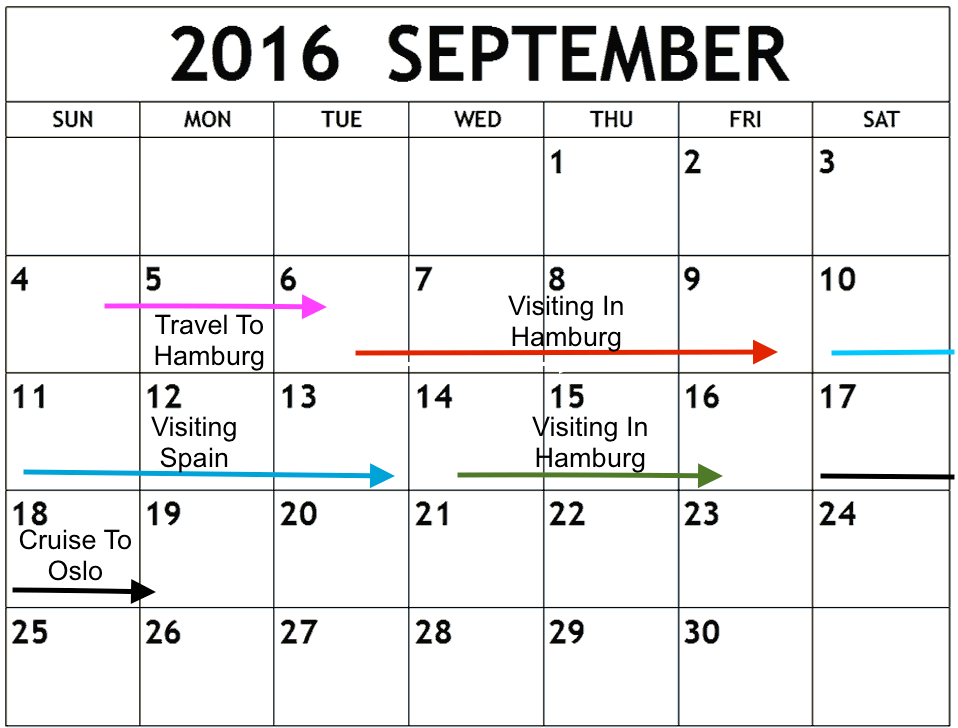

Ten hours in the air and their arms never got tired!

Two hour layover and then off they go again!

September 4th at 35,000 Feet

Modern Windows on a B-787! Kerstin waits in line
Did You Know? - The windows are a dreamy 19 inches tall and 65% larger than the standard airplane windows so you'll get to see a lot more of your surroundings. And did I mention they dim?
The dimming effect is the result of an electrified gel sandwiched between two thin pieces of glass. As the electric current increases, the gel darkens and as it drops, the gel lightens. The system is brilliant in its simplicity.
Each passenger in the coveted window seat will have control over their window. They're also networked together so flight personnel can control the windows, too. Attendants can adjust each window, adjust windows in an entire section of the plane or adjust them for the entire plane.

Sleeping Beauty you may ask?

September 6th
Did You Know? - Hamburg is the second-largest city in Germany and the third most visited, with only Berlin and Munich attracting more tourists. Between 2001 and 2009, the number of overnight stays in Hamburg grew by 70 percent, reaching a total of 8.2 million--thanks in part to the city's maritime attractions, musical-comedy theatres, and airport expansion in recent years.
(Hamburg also has a long-standing appeal for English-speaking visitors: Its trading ties with England go back nearly 750 years, and it was in the British occupation zone after World War II.)
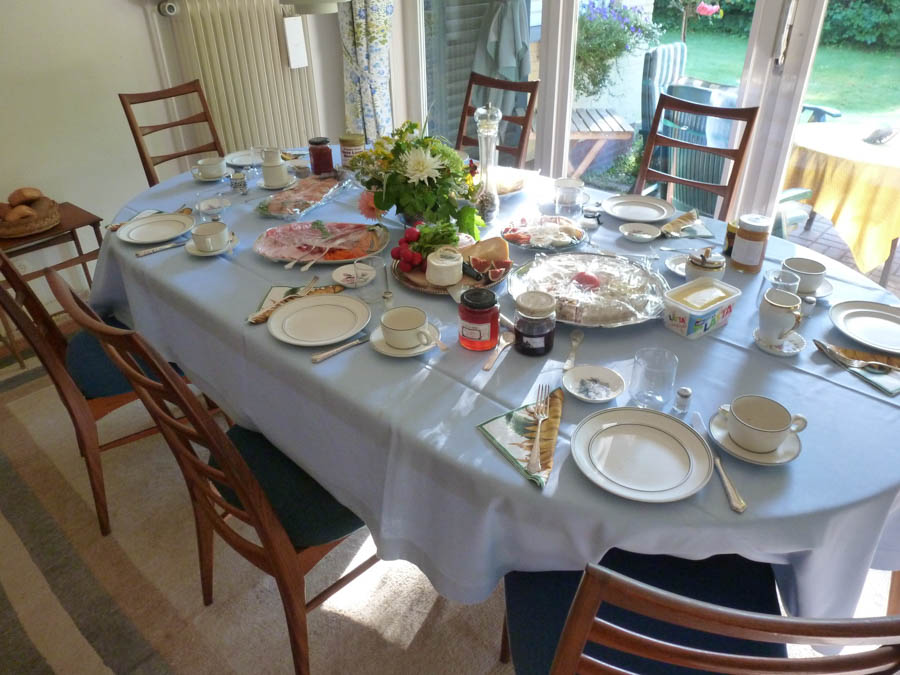
We crashed and the next morning breakfast was waiting for us
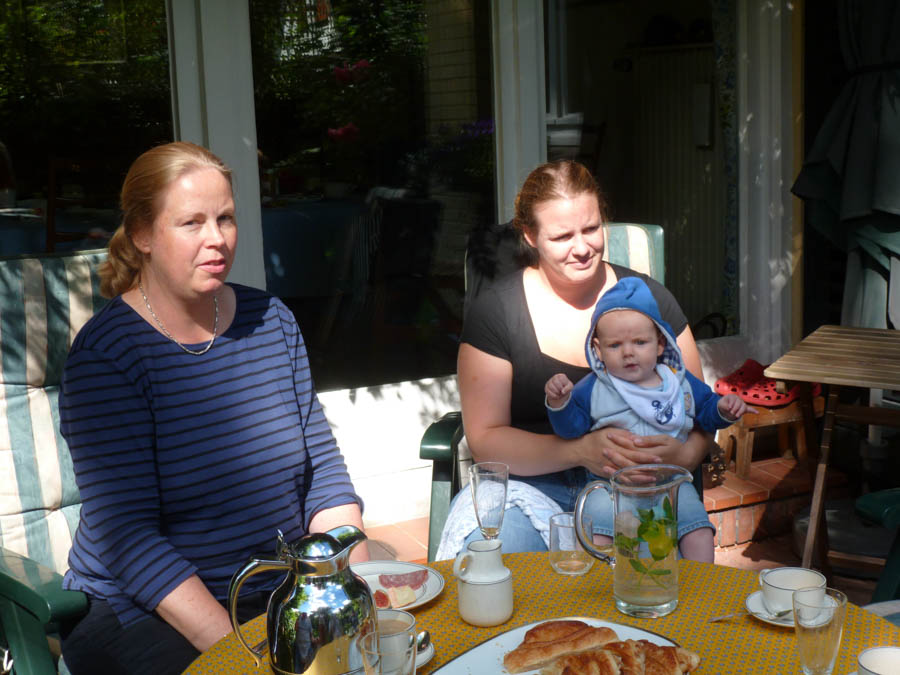
Uta and Svenja (with her son) joined us
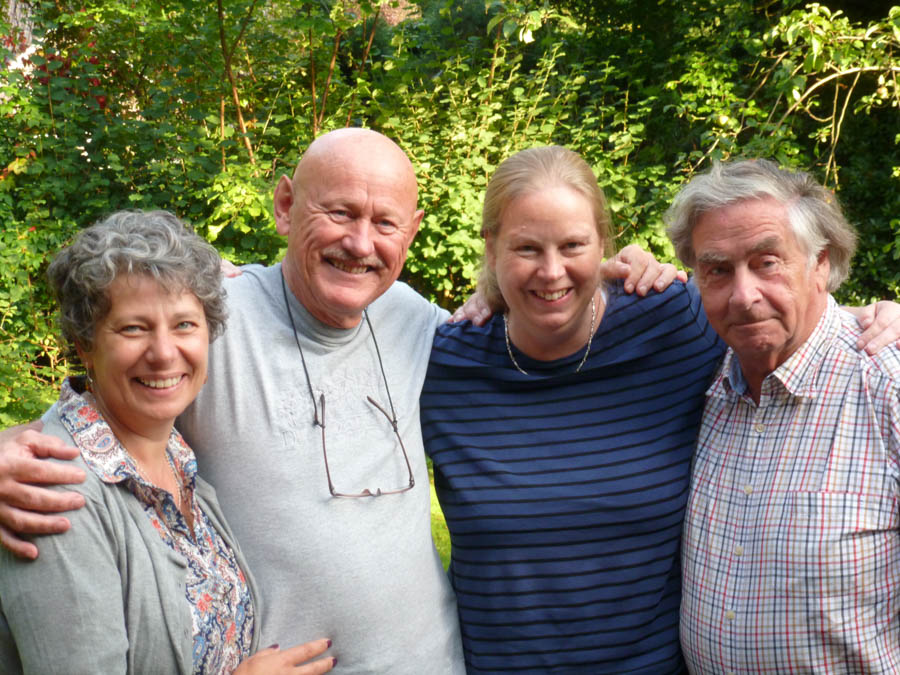
Kerstin, Hans,Uta and Ulli
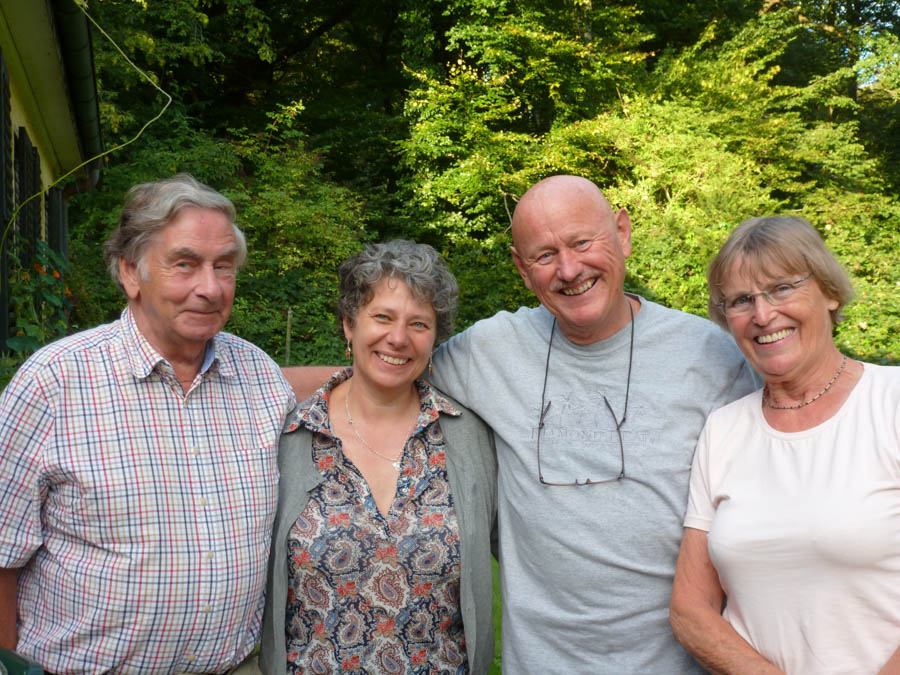
Anke Protz; Hans Thedens; Kerstin Thedens; Ulli Protz
September 7th Sightseeing In Hamburg

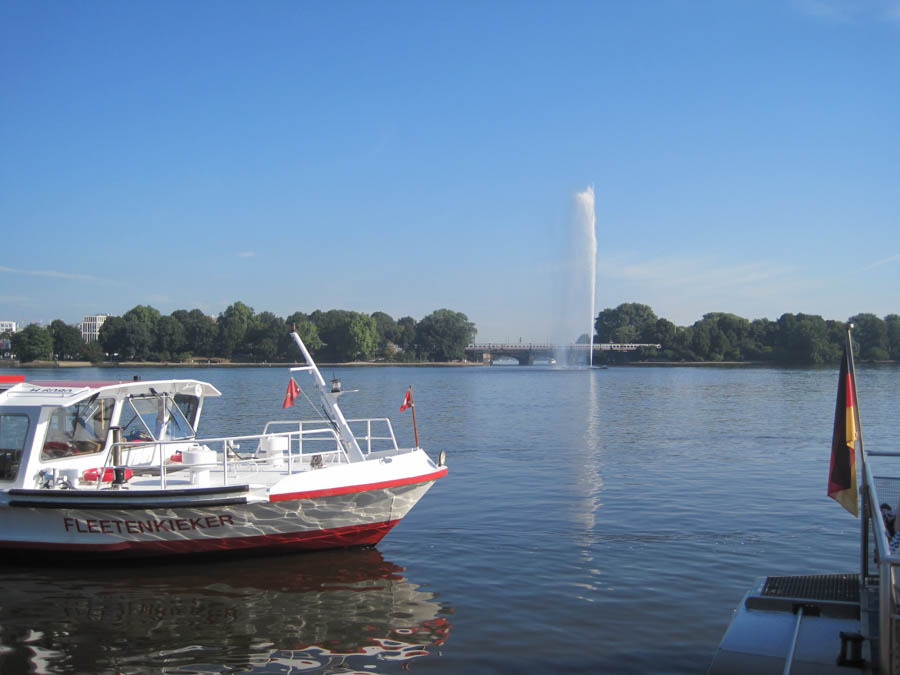
Binnealster Lake with the Lombartsbruecke bridge in the background
(Lombardsbrücke (Lombard Bridge) is the
name of the bridge crossing the Alster River )
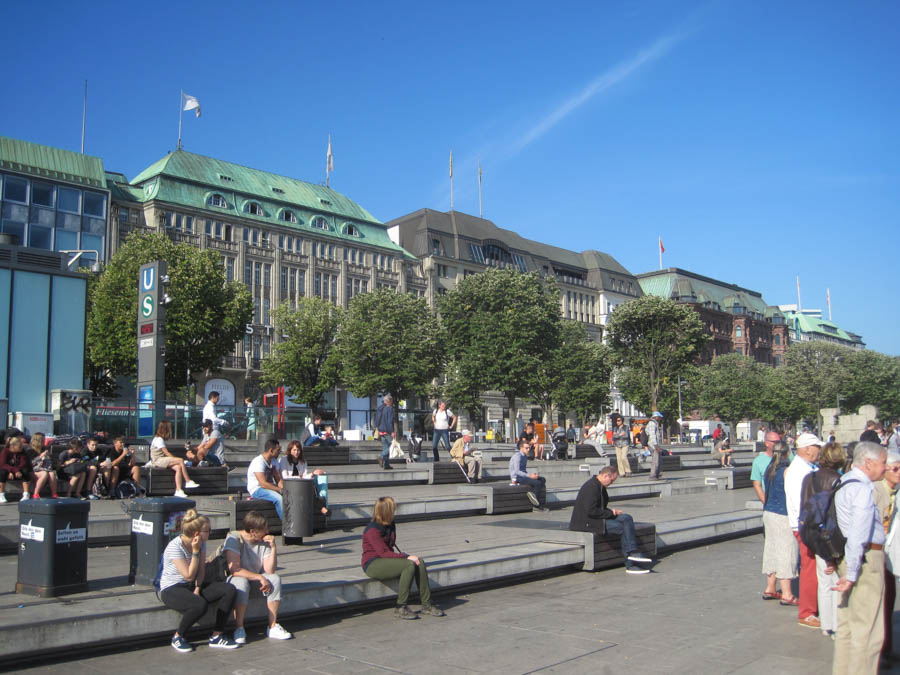
Enjoying the great weather along Jungfernstieg Promenade

On the water front!
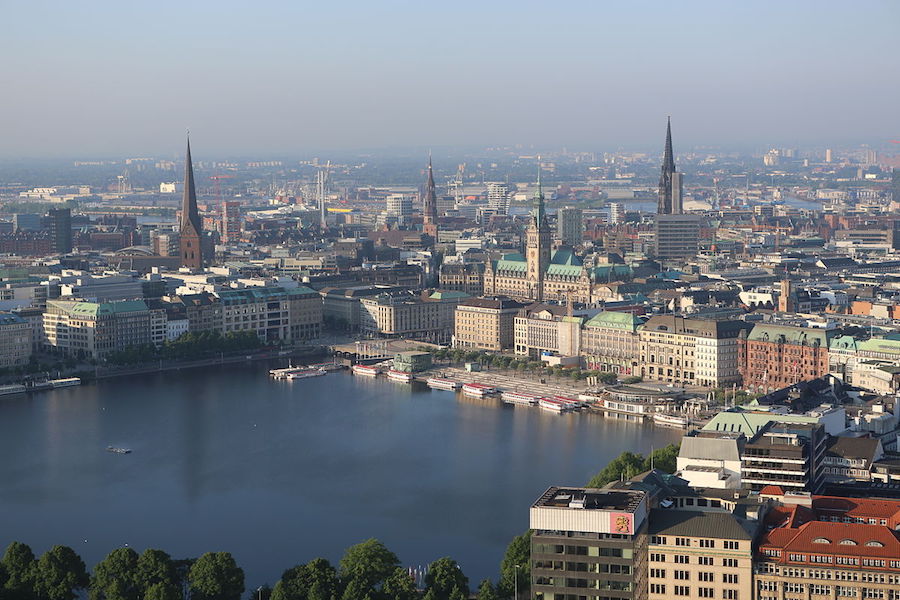
Aerial view of the Jungfernstieg
Did You Know? - The Jungfernstieg is an urban promenade in Hamburg, Germany. It is the city's foremost boulevard.
For the largest part, Jungfernstieg lies within the Hamburg quarter of Neustadt, though its eastern end also reaches into Hamburg-Altstadt. In total, Jungfernstieg stretches some 600 m along the southern, south-western shore of Lake Binnenalster and continues further to Gänsemarkt. On the lake-side, it is framed by Ballindamm (and nearby Europa Passage) to the east and Neuer Jungfernstieg to the west.
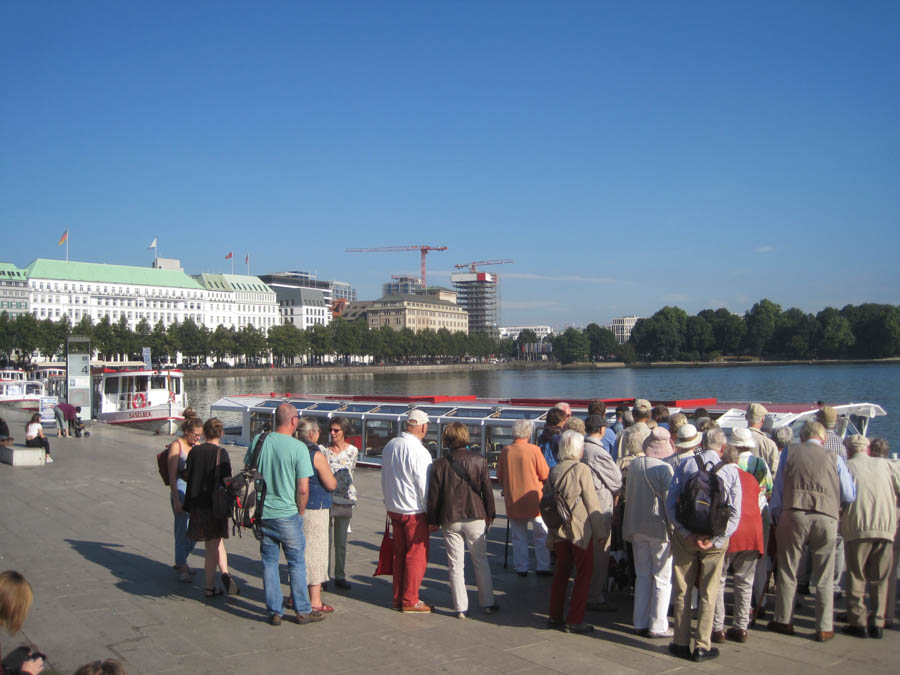
Binnenalster or "Inner Alster Lake" have many sightseeing boats

Aerial view of the promenade
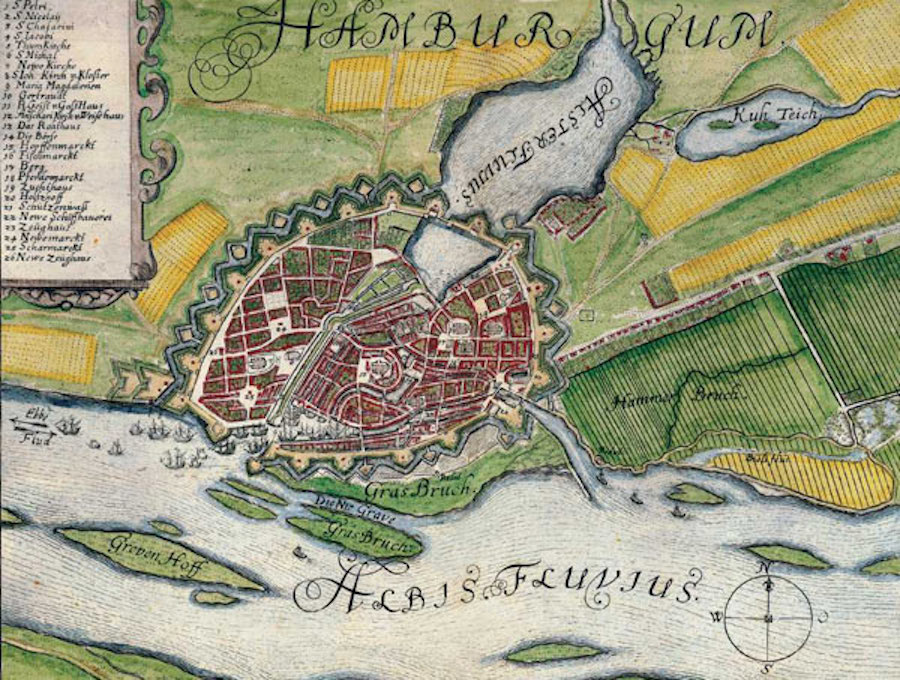
Hamburg circa 1660 was a walled city
Did You Know? - Binnenalster or "Inner Alster Lake" is one of two artificial lakes within the city limits of Hamburg, Germany, which are formed by the river Alster.
The phrase "inner" refers to the old city walls of Hamburg. The Binnenalster was the part of the lake that was "inside" the city walls. The lake was originally created to serve as a reservoir for a mill. As of 2008 the old city walls do not exist
Surface area: 0.2 km2 (20 ha)
Average depth 2.0 m (6.6 ft)
Maximum depth 3.0 m (9.8 ft)
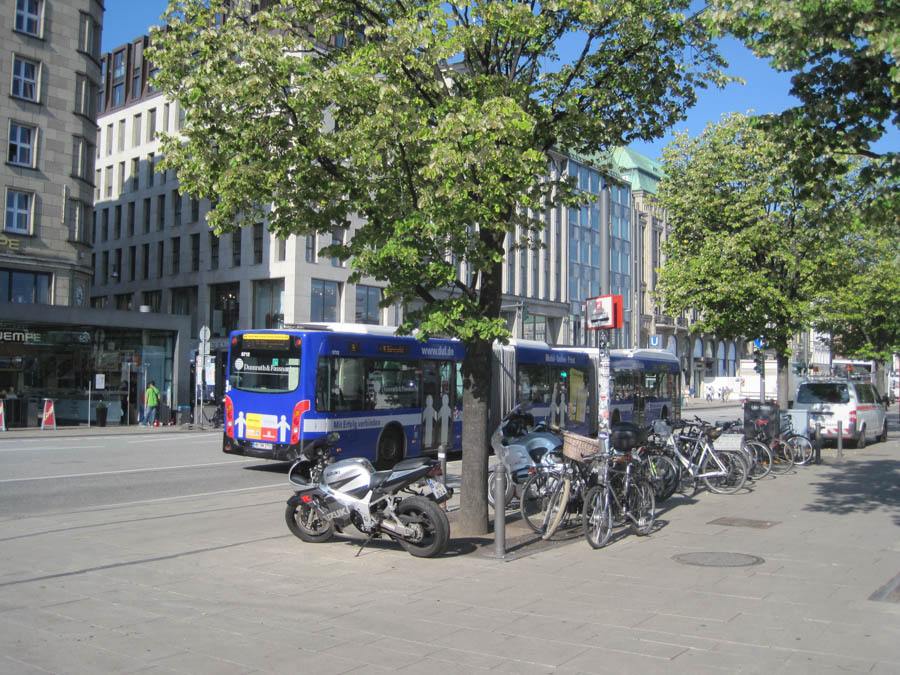
Long busses travel along the waterfront

Alsterarkaden is shopping area
These elegant white arcades along the
water evoke a touch of Venetian elegance. These stylish shopping
arcades are the showpiece of downtown Hamburg.
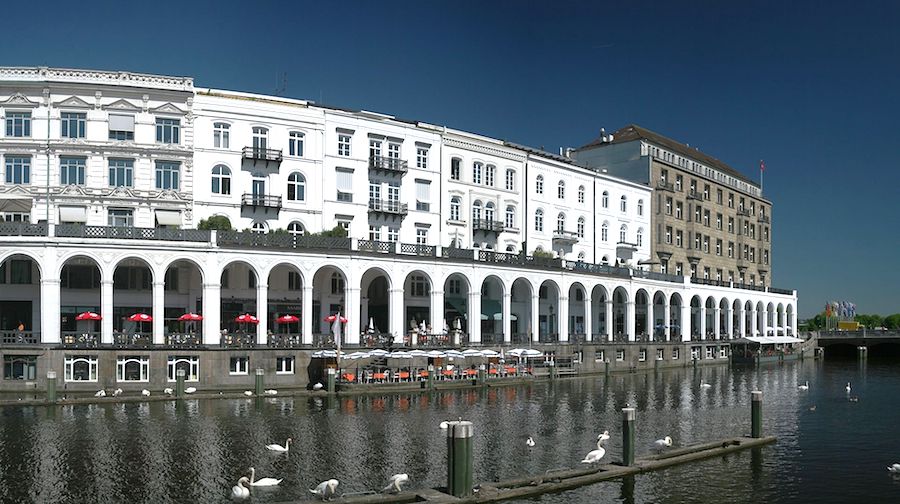
The Alsterarkaden was built after the Great Fire of 1842
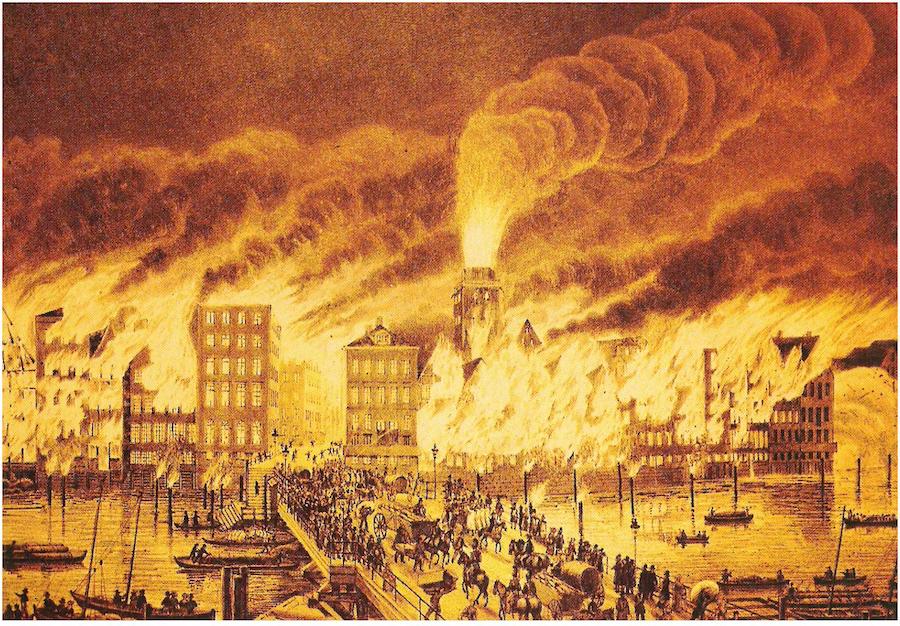
The Great Fire, 1842 painting by Peter Suhr
Did You Know? - The Great Fire of Hamburg began early on May 5, 1842 in Deichstraße and burned until the morning of May 8, destroying about one third of the buildings in the Altstadt. 51 people were killed and 1,700 residences and several important public buildings were destroyed. The fire required major rebuilding of the city and led to improvements in its infrastructure.
The fire began in Eduard Cohen's cigar factory at Deichstraße 42 or 44 early in the morning of May 5, 1842; a neighbor alerted the night watch at about 1 a.m.
It quickly spread to number 25, across the street.
The weather had been unusually dry, and the wind was strong and changeable. Hamburg had fire lookouts on church towers, known as Türmer, in addition to night watchmen who had horns to sound to report a fire, and a code by which church bells reported the location and severity of fires.

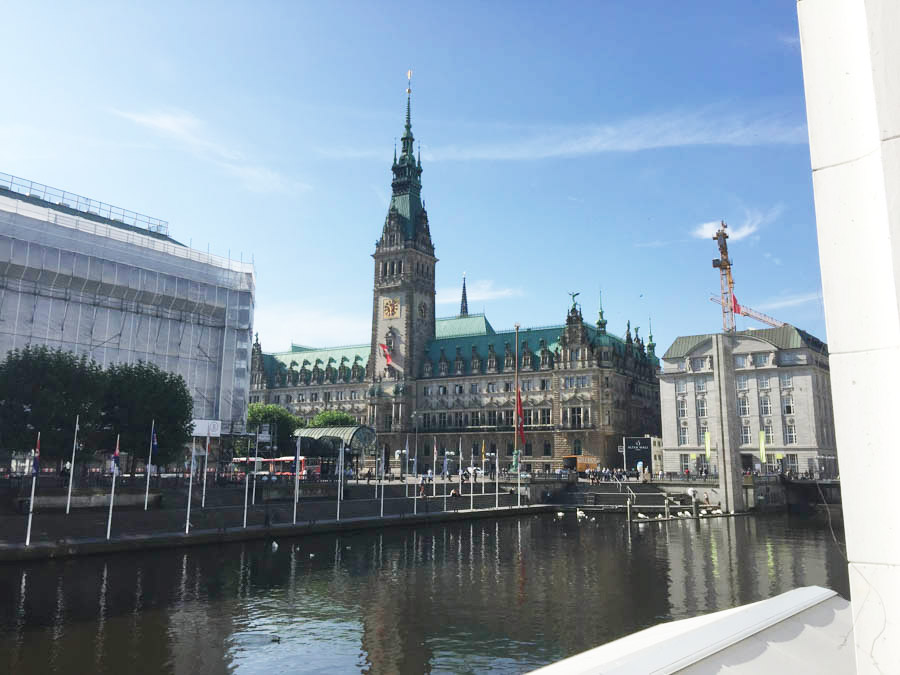
Hamburg City Hall
is a beautiful building housing the city government
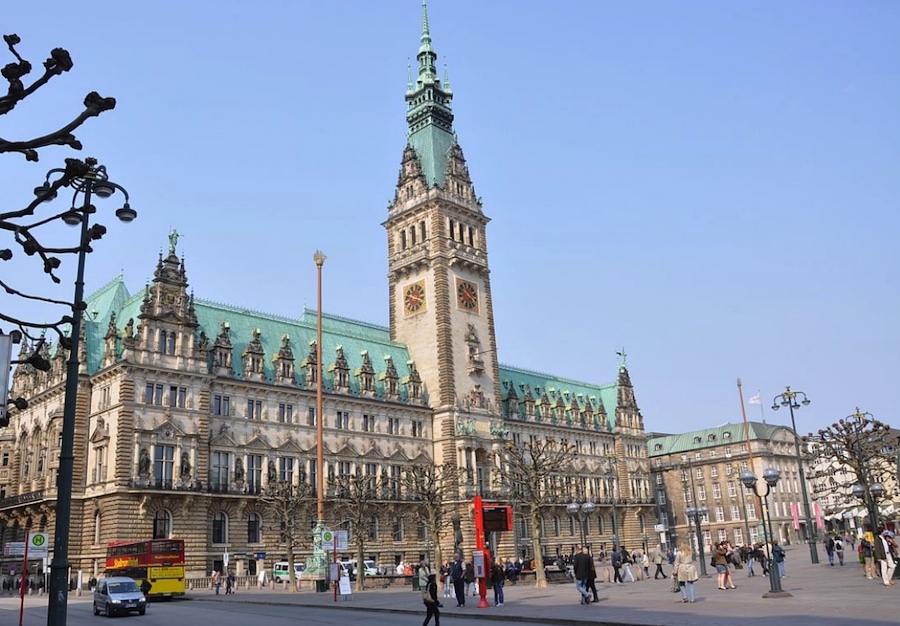
The copper roof turns green after many years of exposure to the elements
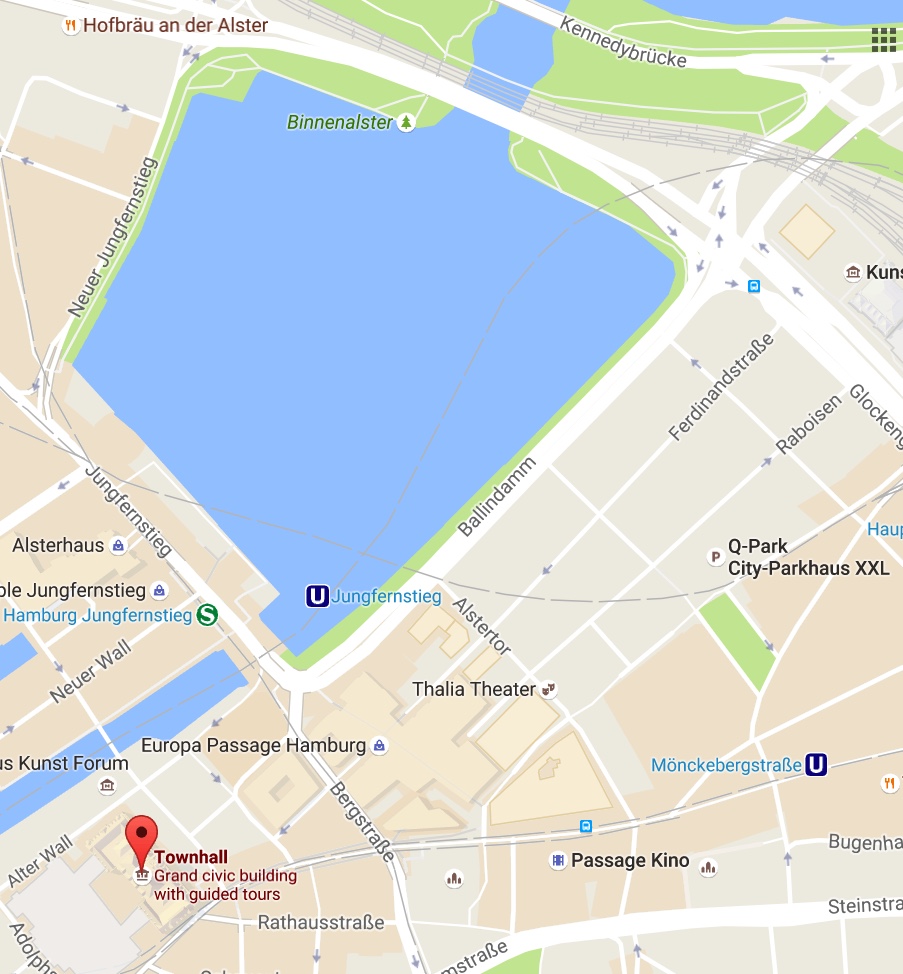
Located just a block from the inner lake
Did You Know? - After the old city hall was destroyed in the great fire of 1842, it took almost 44 years to build a new one.
The present building was designed by a group of seven architects, led by Martin Haller. Construction started in 1886 and the new city hall was inaugurated in 1897.
Its cost was 11 million German gold marks, about €80 million.
The Hamburg Rathaus is the Rathaus—the city hall or town hall—of the Free and Hanseatic City of Hamburg, Germany.
It is the seat of the government of Hamburg and as such, the seat of one of Germany's 16 state parliaments.
The Rathaus is located in the Altstadt quarter in the city center, at the Rathausmarkt square, and near the lake Binnenalster and the central station.
Constructed from 1886 to 1897, the city hall still houses its original governmental functions with the office of the First Mayor of Hamburg and the meeting rooms for Hamburg's parliament and senate (the city's executive).
Floor area 17,000 m2 (180,000 sq ft)
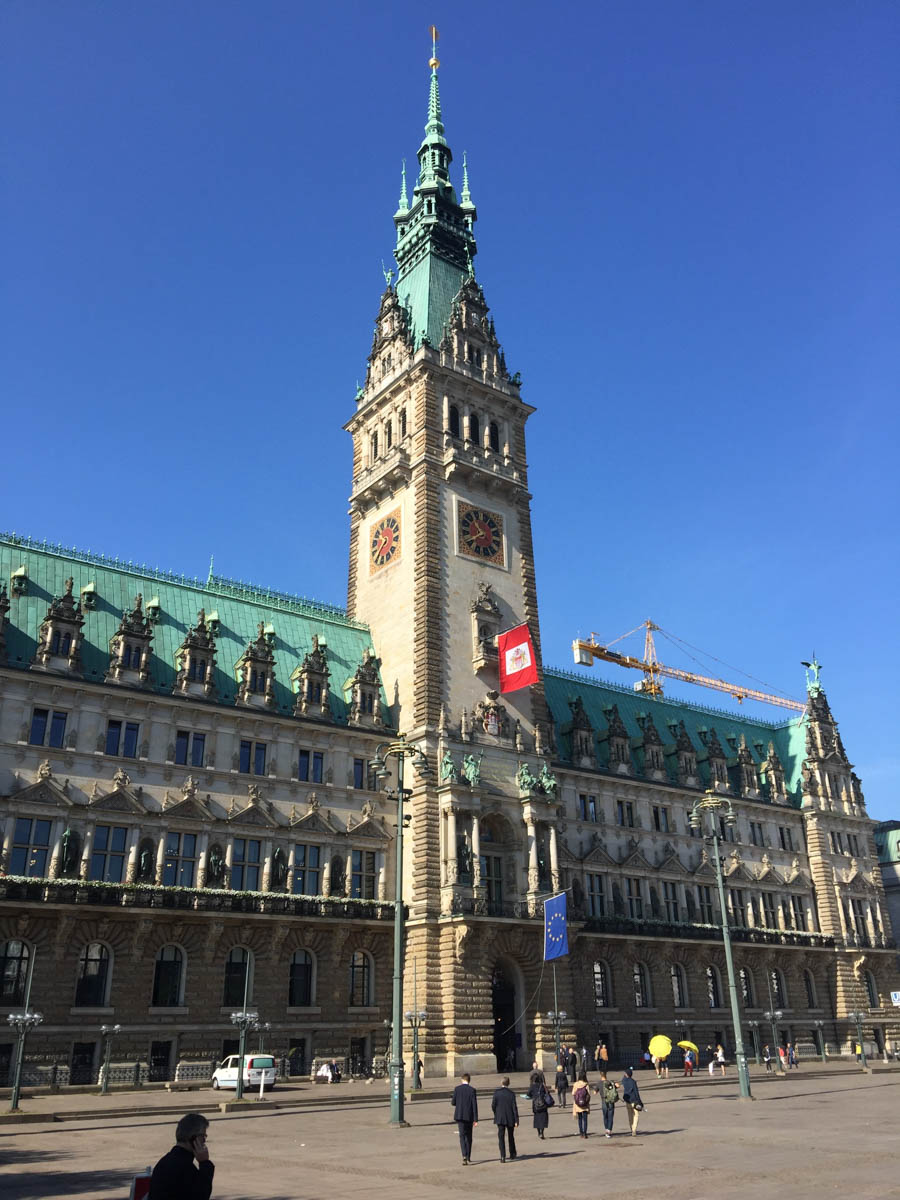
The tower was intended to express this wealth and also the independence
of the State of Hamburg and Hamburg's republican traditions.


Kerstin's Mom is arriving on the train
Did You Know? - Hamburg Hauptbahnhof (abbrev. Hamburg Hbf or Hambg Hbf) is the main railway station for the German city of Hamburg and is classified by Deutsche Bahn as a category 1 railway station.
It was opened in 1906 to replace 4 terminal stations. Hamburg Hauptbahnhof is operated by DB Station&Service AG. With an average of 480,000 passengers a day, the railway station is the busiest in Germany and after the Gare du Nord in Paris, the second busiest in Europe.

The transportation hub has a perfect location
near the heart of the city

Mom is here somewhere

Moving 480,000 people a day keeps the tracks busy!

Simply huge inside
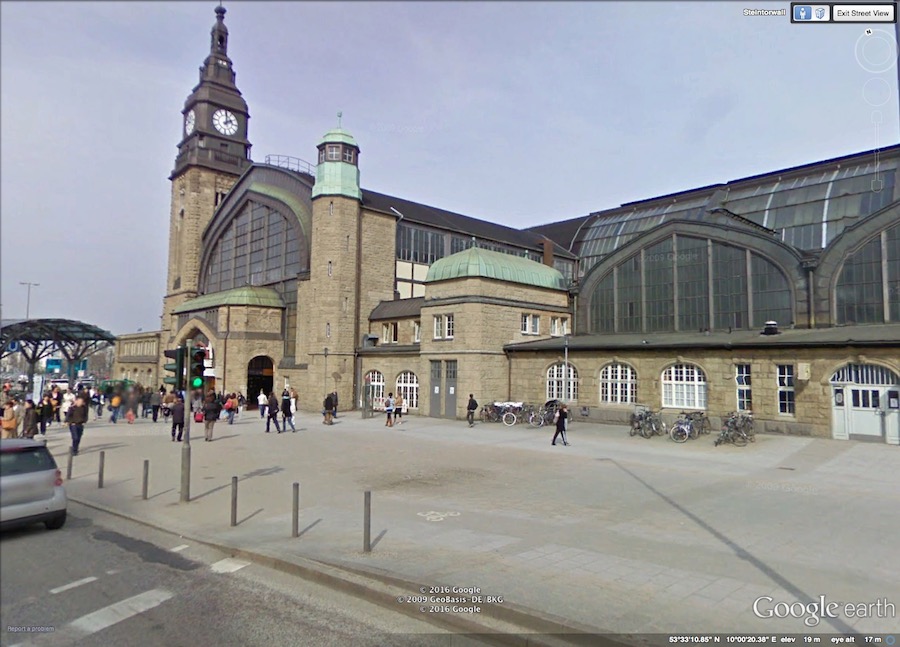
...and even larger on the outside
Did You Know? - Hamburg Hauptbahnhof is 206 m (676 ft) long, 135 m (443 ft) wide, and 37 m (121 ft) high. It has 8,200 m2 (88,000 sq ft) rentable area and 27,810 m2 (299,300 sq ft) in total. The clock towers at the station building are 45 m (148 ft), and the clocks have a diameter of 2.2 m (7 ft 3 in).
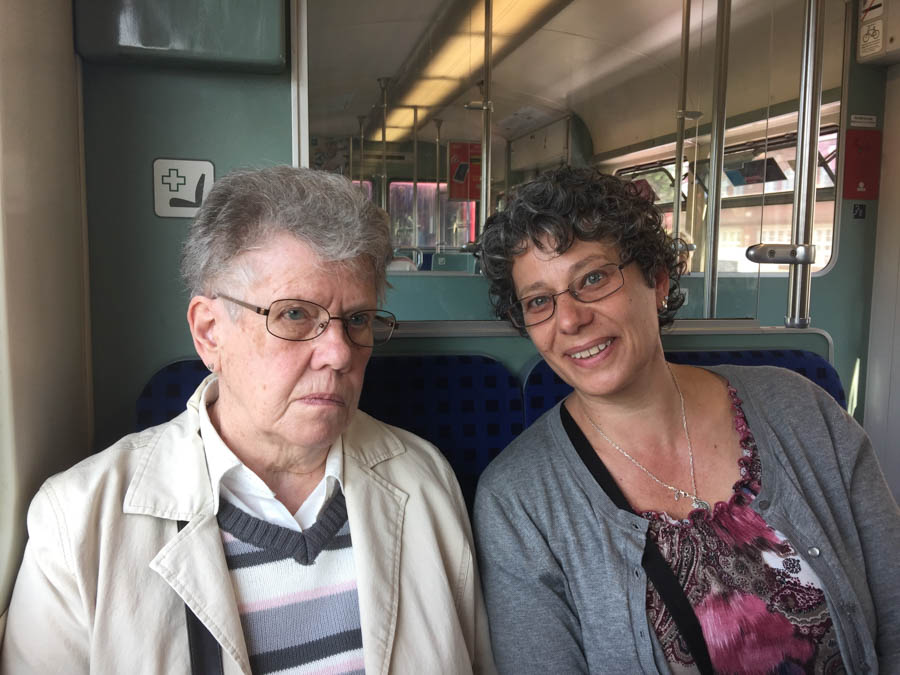
Mom is with us so we take the bus back to the water
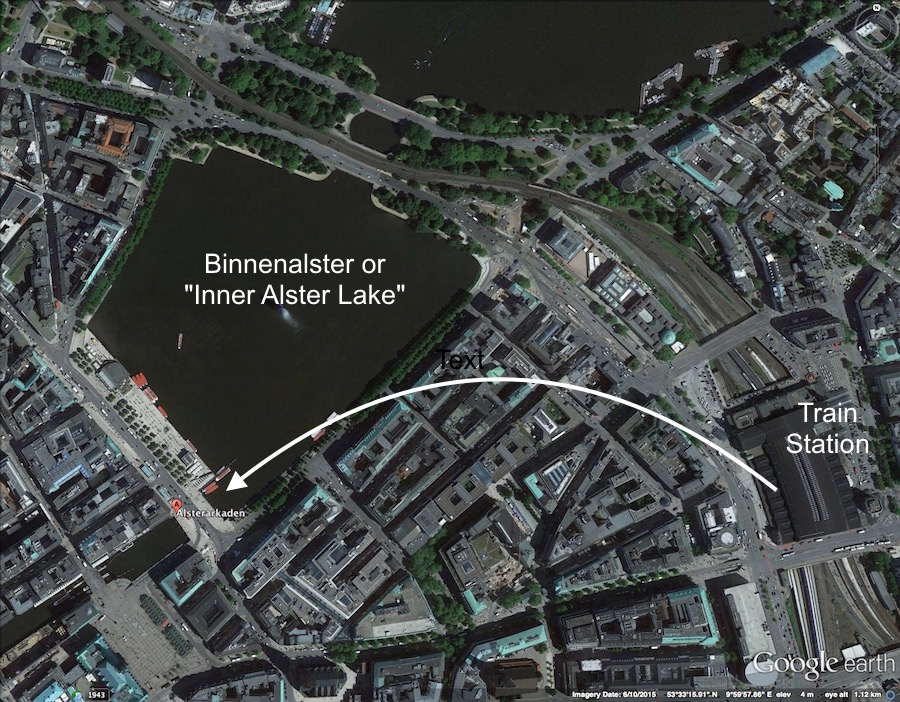
Not too far back to Binnenalster

Upscale shopping in the heart of Hamburg

Alsterarkaden shopping area
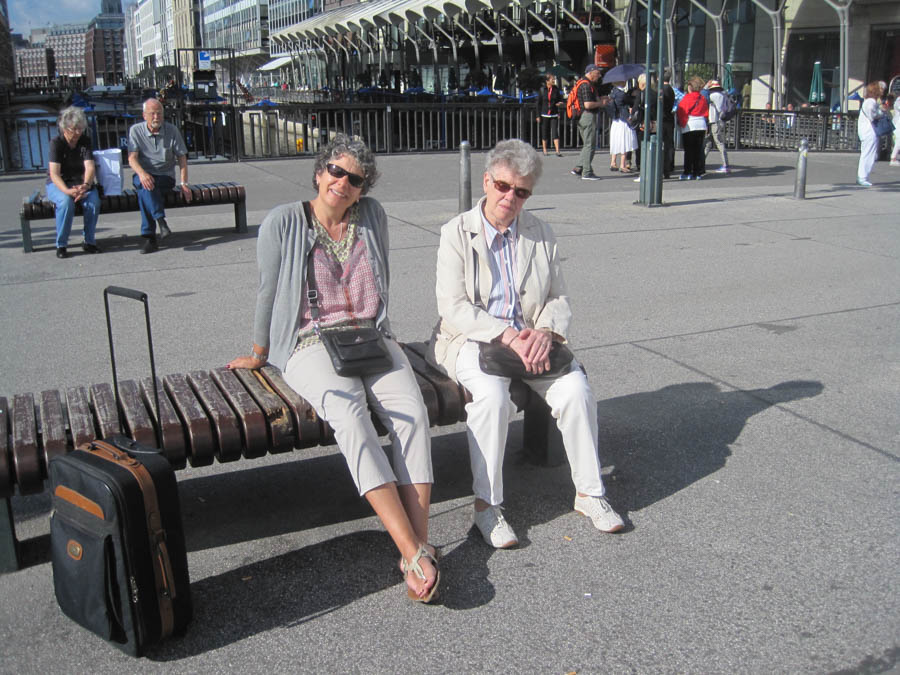
Time to visit with Mom
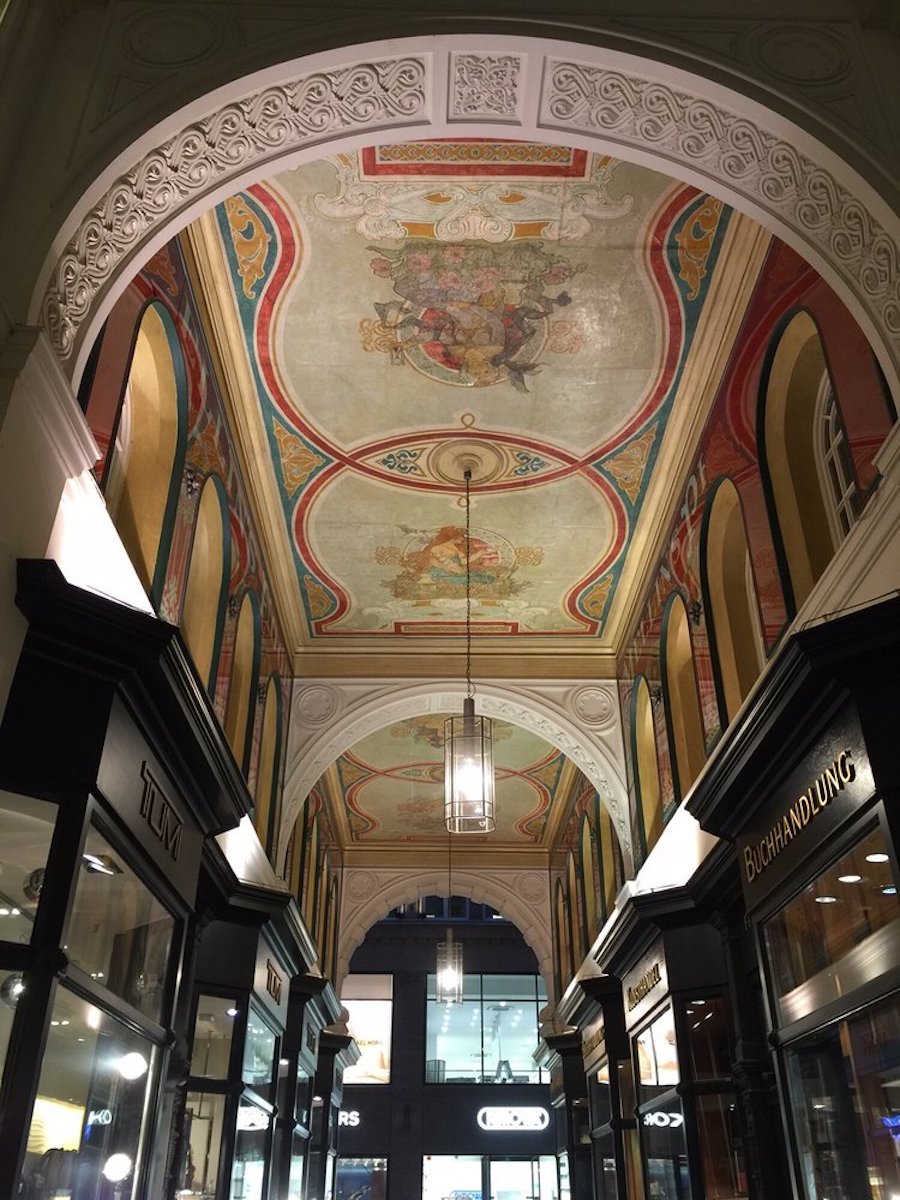
Beautiful ceilings throughout
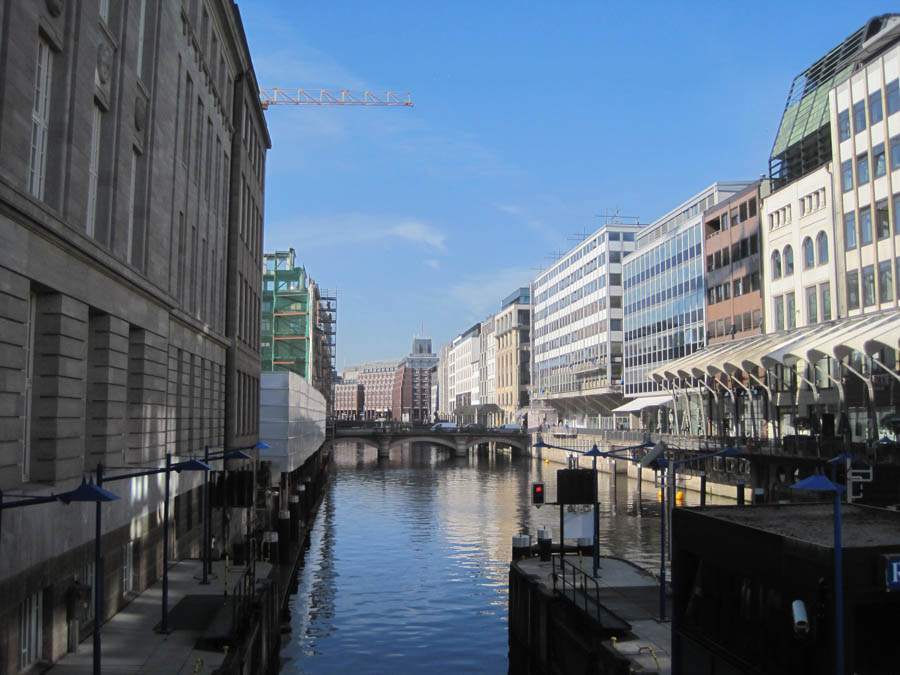
Right on the canal... Easy delivery of supplies!
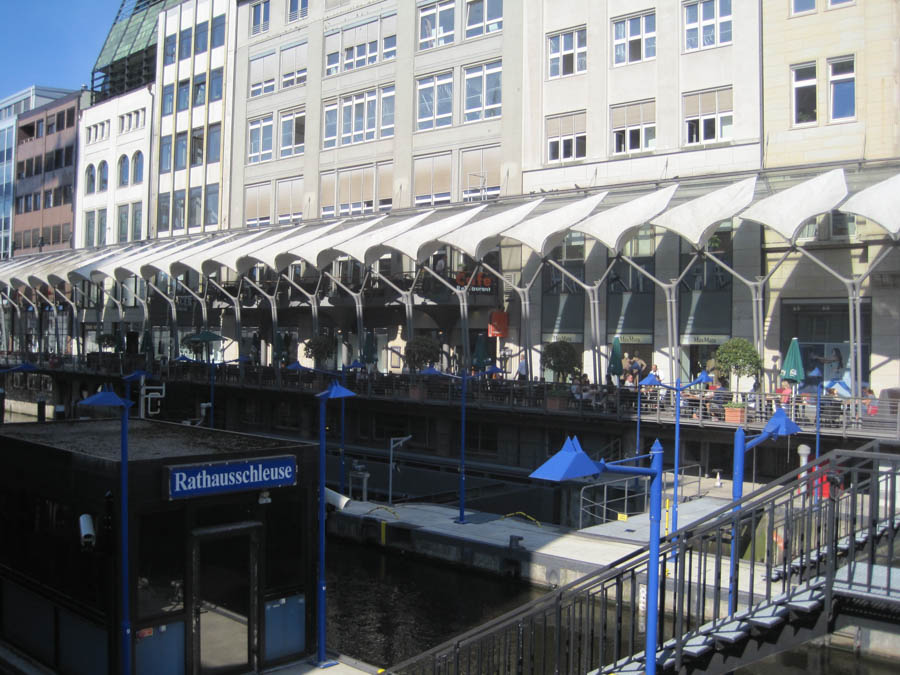
Many small restaurants line the area


11.61 kilometers or 7.21 miles
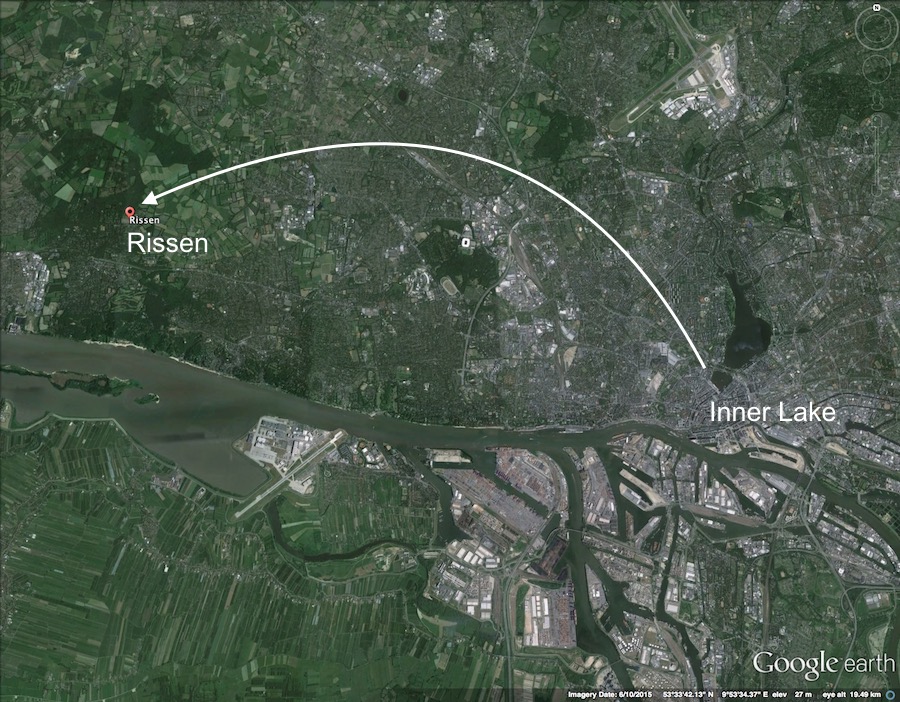
From major city to the country in just a few niles
Did You Know? - Rissen is a quarter in the westernmost of Hamburg (Germany). Rissen belongs to the Altona borough. In 2014, the population was 15,058.
Rissen was first officially mentioned in 1255, being named "Risne". For centuries, Rissen was part of Holstein-Pinneberg and was thus a part of today's Schleswig-Holstein area. In 1789, the local government bought the part of Rissen called Klövensteen and let it become a large forest.
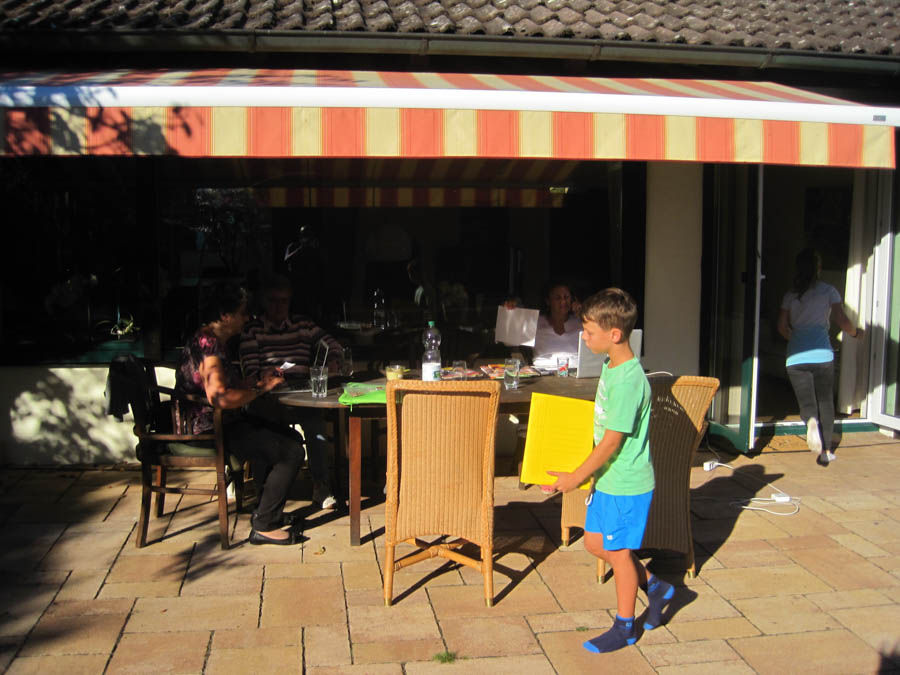
At Anke's house in Rissen

Just visiting with Mom
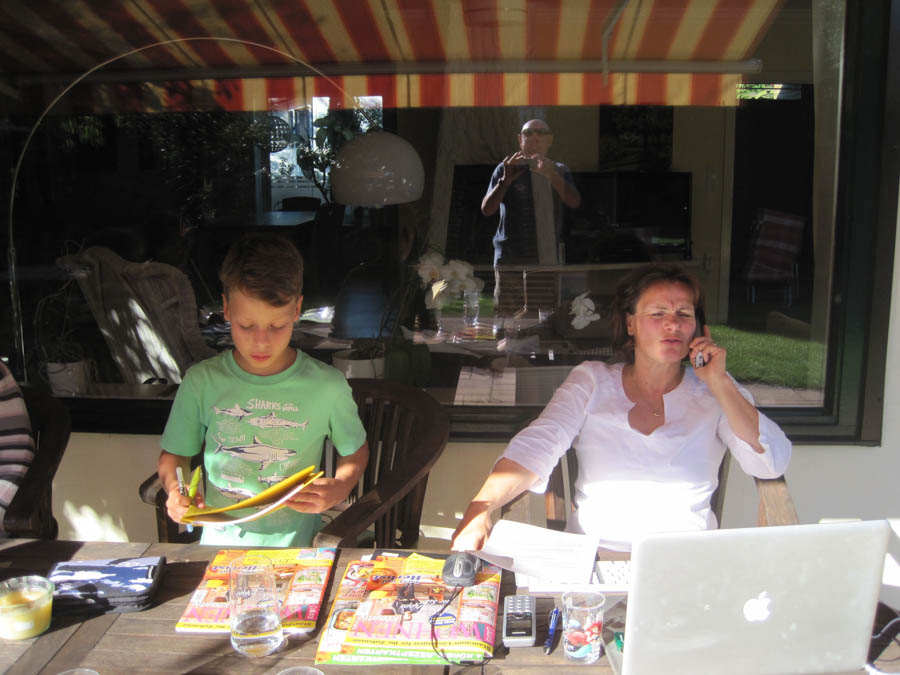
Is that an apparition on the window or is it Han's reflection?
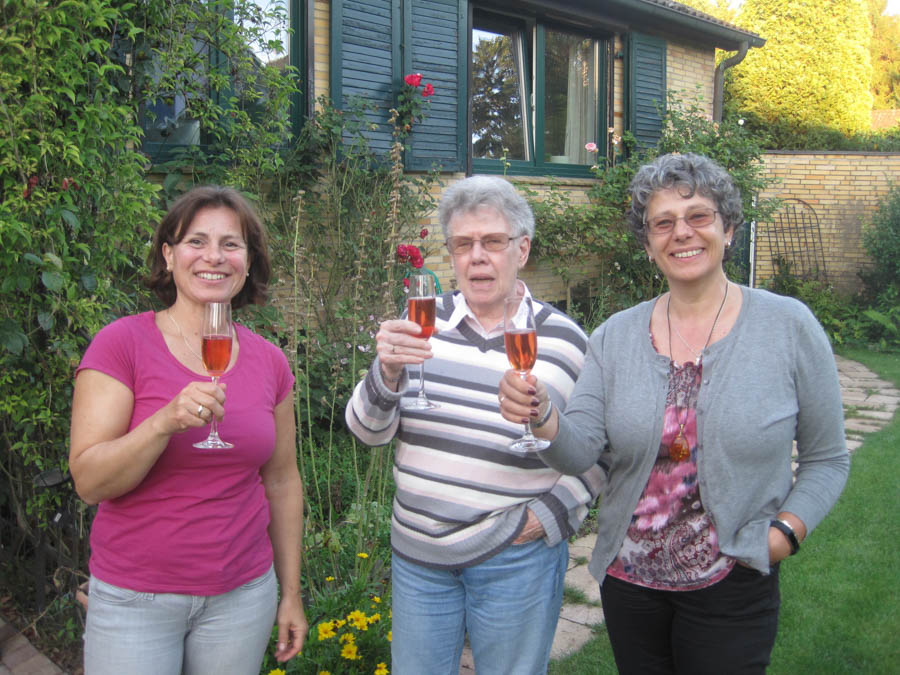
Anke, Uschi and Kerstin drinking champain

Jesco, Anke, Kerstin Hans and Uschi examining Han's "Point and Shoot" camera
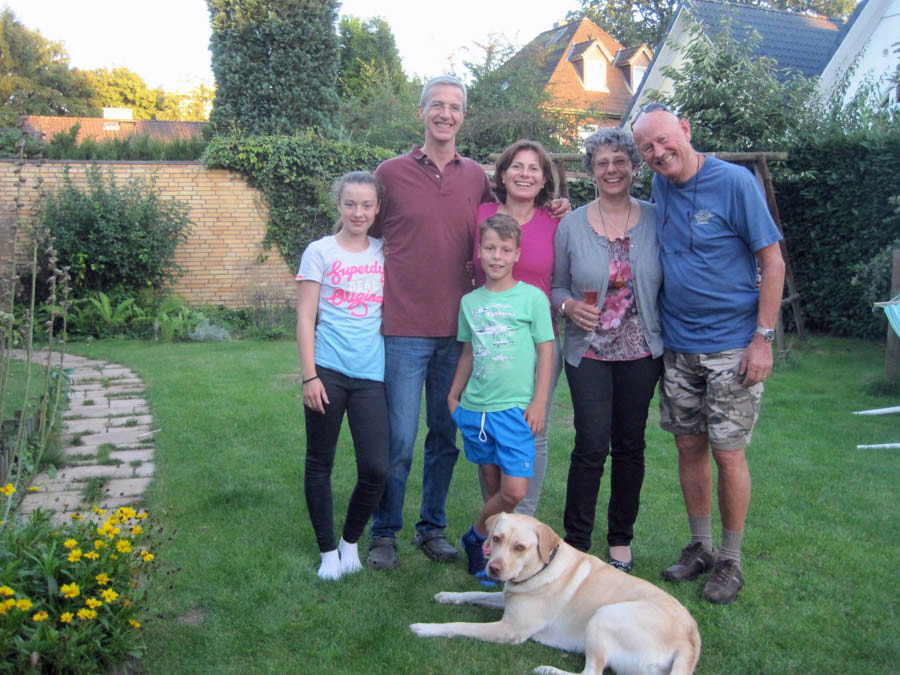
Lola, Jesco,Enno, Anke, Kerstin Hans and Milli
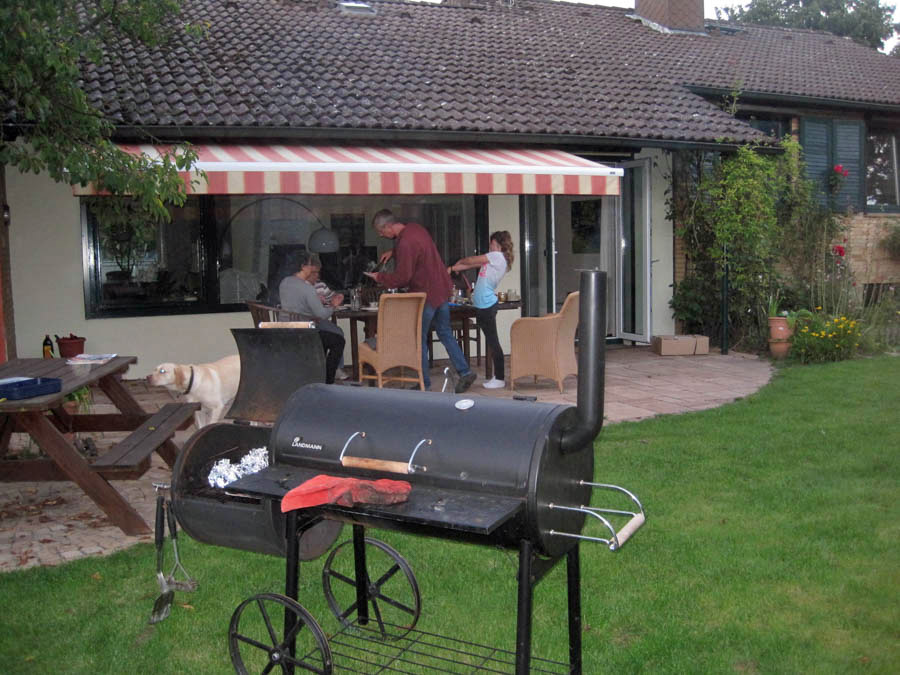
Firing up the Bar-B-Que
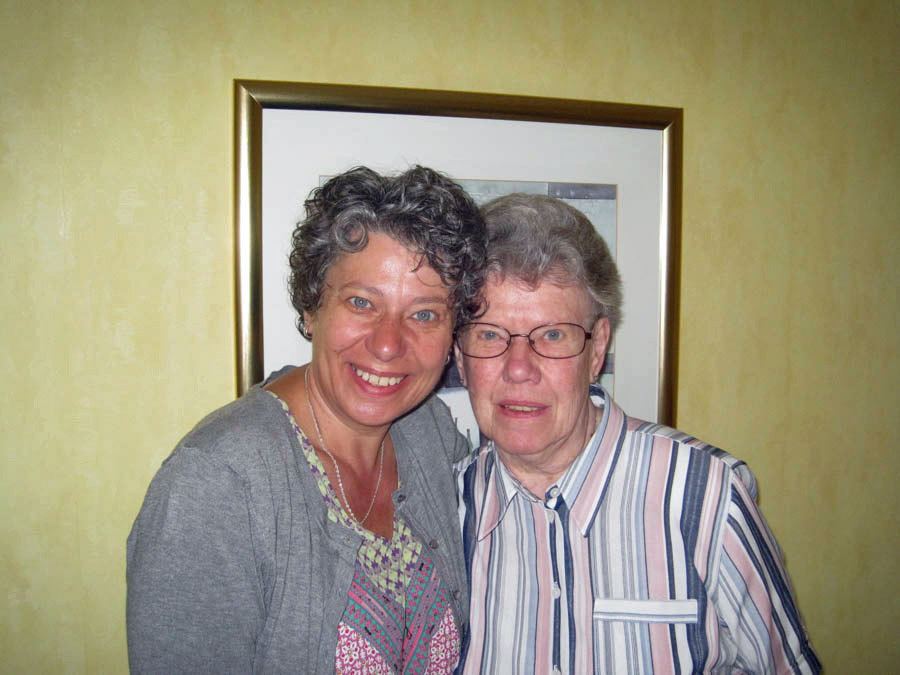
Come on Mom... Give us a smile!

Mom heads back home.... To Hamburg and the train station


Two hours of Hamburg history
Did You Know? - Witness the grandest contrast in the city's architecture on show here. The historic Speicherstadt district, with its warehouses for carpets, coffee and spices from all over the world, stands in direct contrast to HafenCity, Hamburg's modern residential and business district.
Glide along narrow waterways under countless old and new bridges, threading in and out of the wharves of Hamburg's old free port (when the tide allows) and past the Elbphilharmonie Concert Hall.
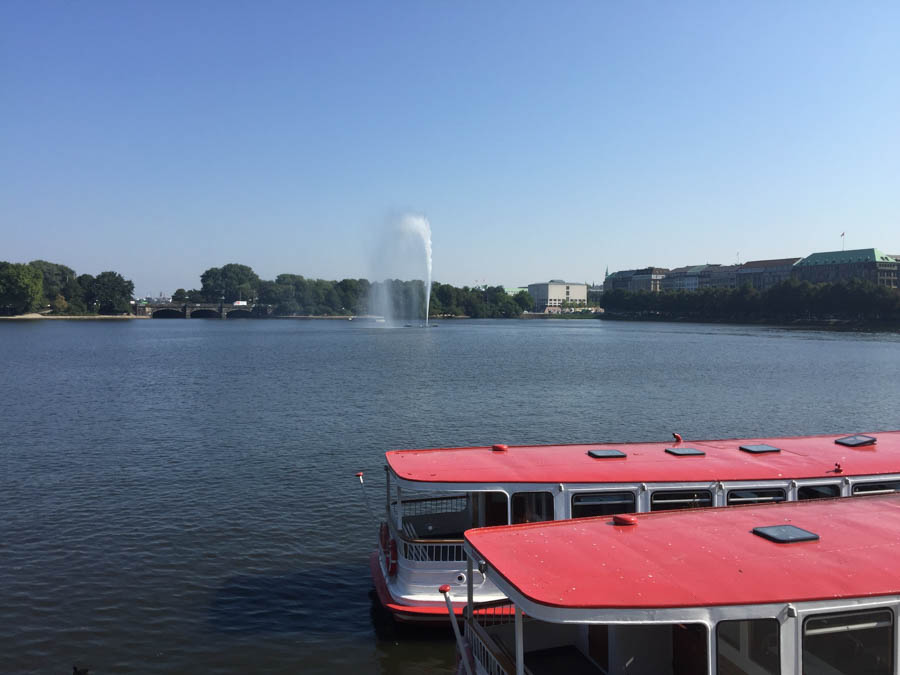
Binnenalster with fountain
(
Take a look at the city from the lake
)
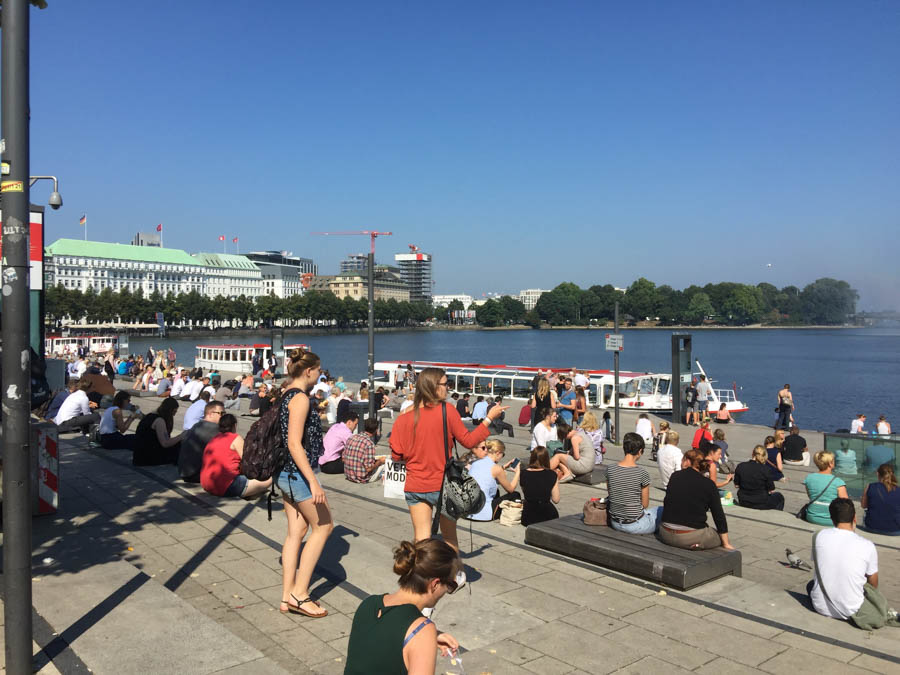
A sunny day at the Alster river

On board a sightseeing "Fleetfahrt ship"
We went on a modern harbor launch and go to the origin of the
fascinating world harbor. Look at the canals and channels
downtown, drive through two locks, one of the oldest bridges, the
town hall, the historic warehouse district and parts of the port.

Taking in the sunshine
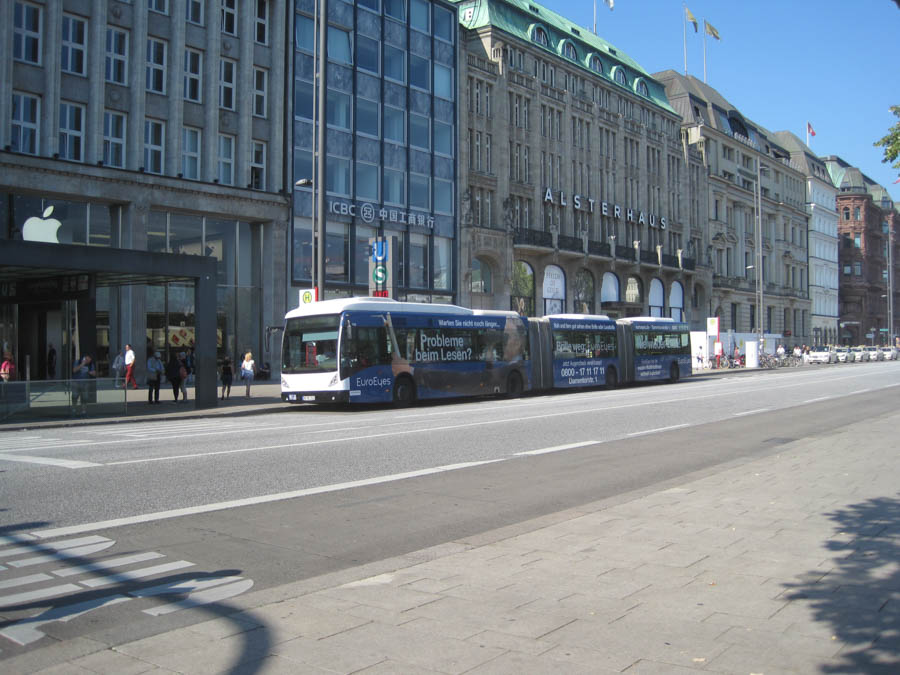
Alsterhouse with a very long bus
Did You Know? - The Alster house was opened in 1912 as a department store on Jungfernstieg 16-20 in Hamburg with five storeys.
There from 1994 to 2014, a branch of the department store group Karstadt (as part of the Karstadt Premium GmbH), since it forms with the Oberpollinger in Munich and the KaDeWe in Berlin KaDeWe The Group GmbH.
The department store has a sales area of around 24,000 square meters, and specializes in high-value items such as perfume, accessories, clothes and delicatessen. In the fourth floor there is a LeBuffet-restaurant overlooking the Inner Alster.
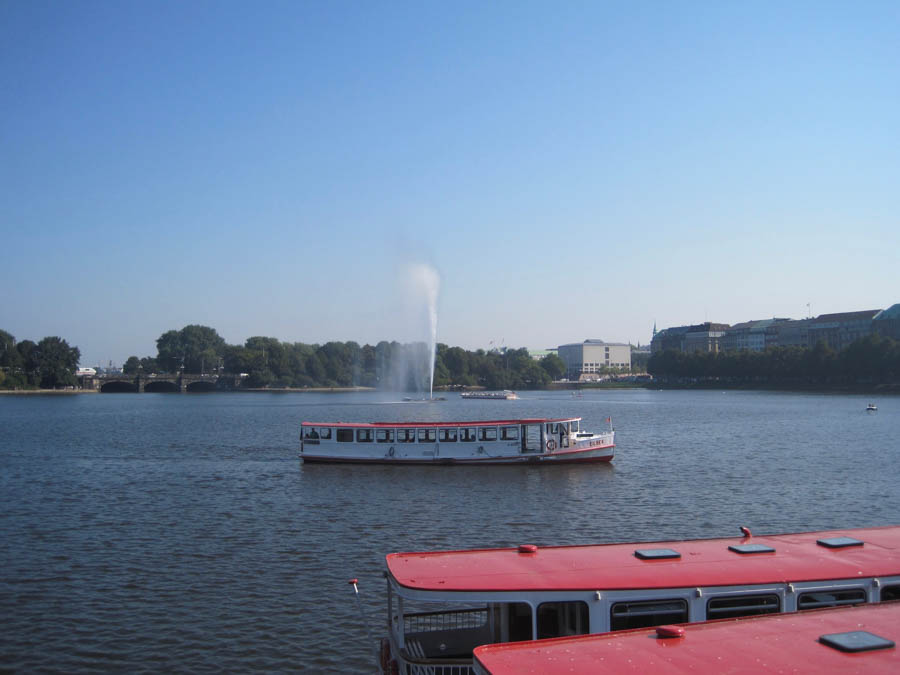
These ships are more than 100 years old
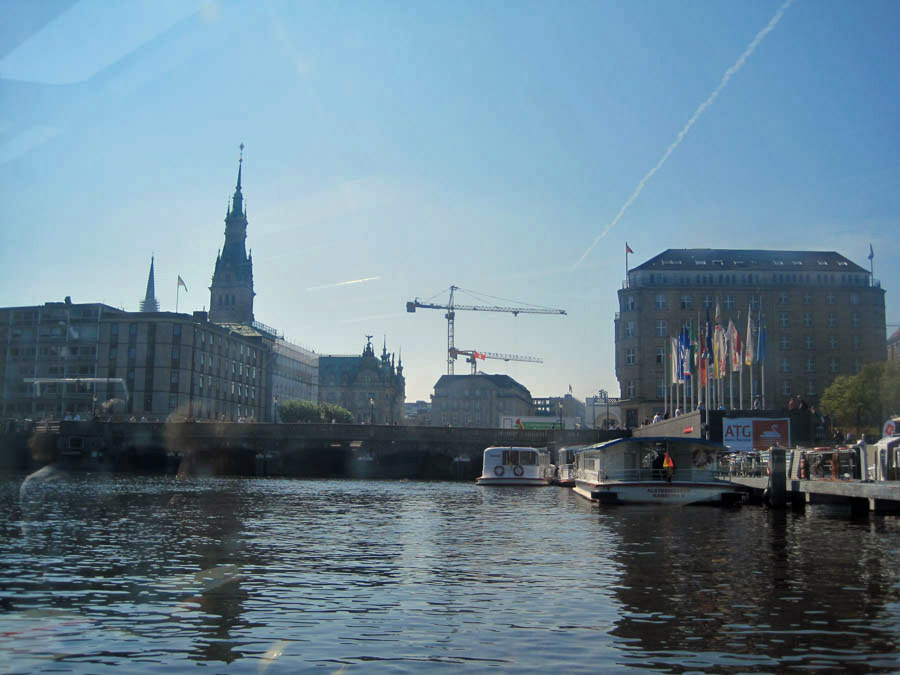
The canal ends up connecting to the Elbe River
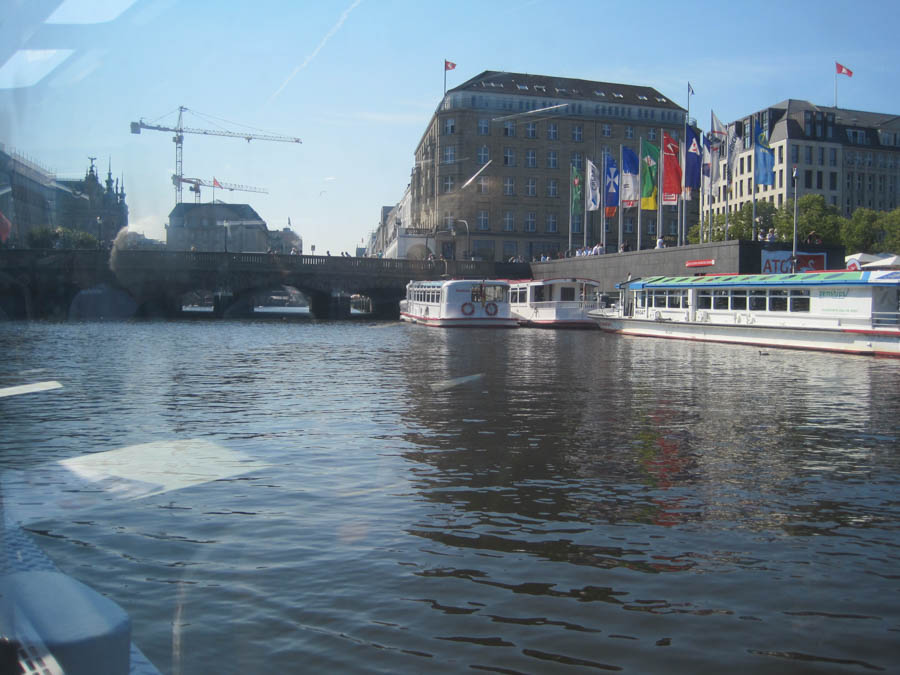
To the harbor
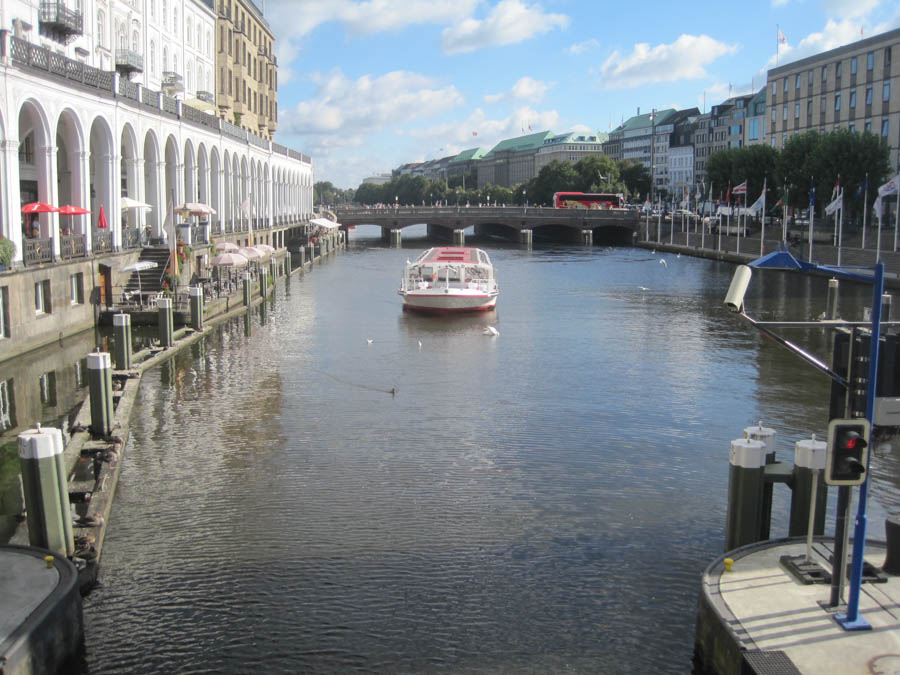
It's a tight fit

Breath in as we pass by the piers
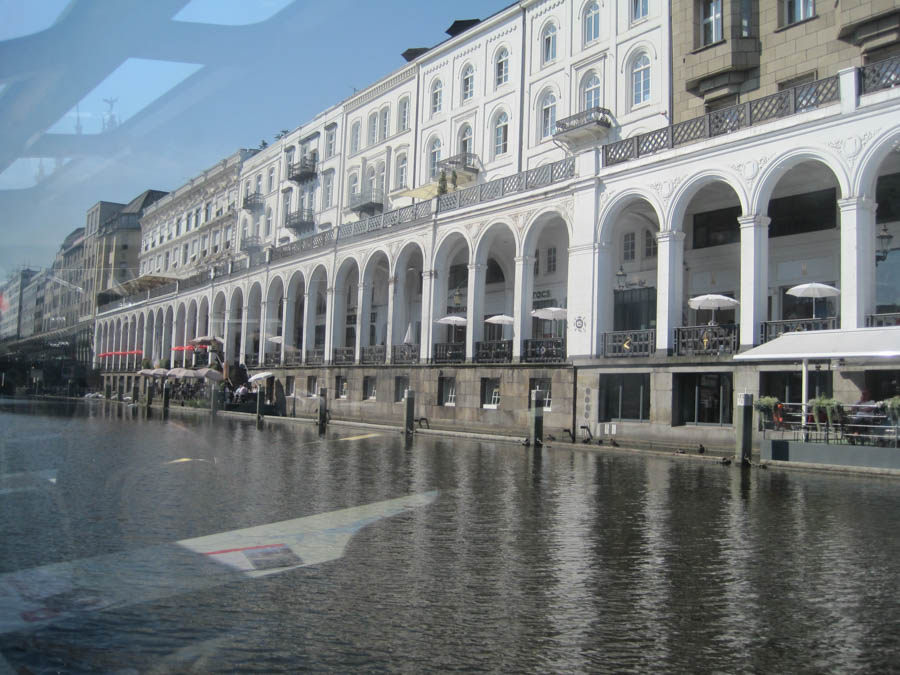
Passing by the Alsterarkaden once more

The Inside Harbour
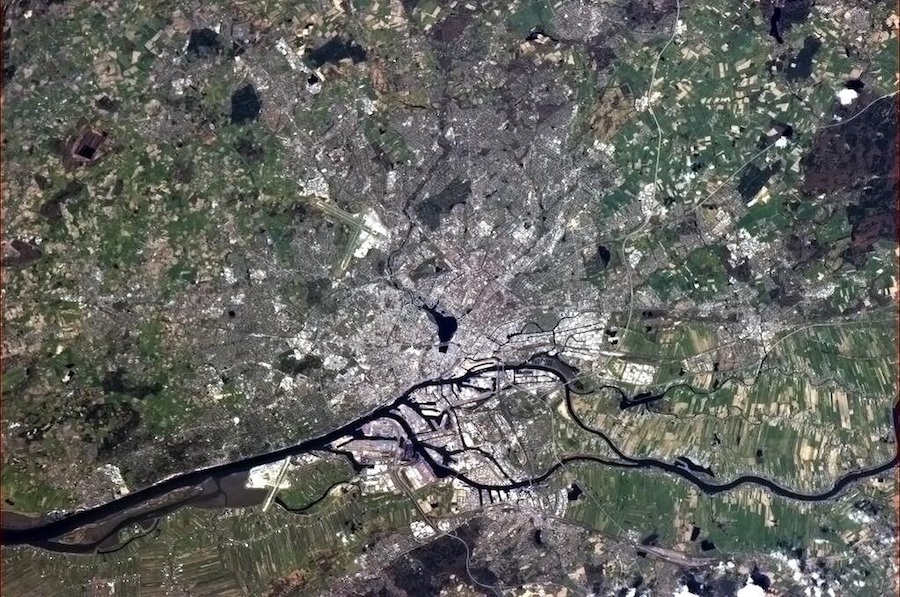
Hamburg is on the Elbe River
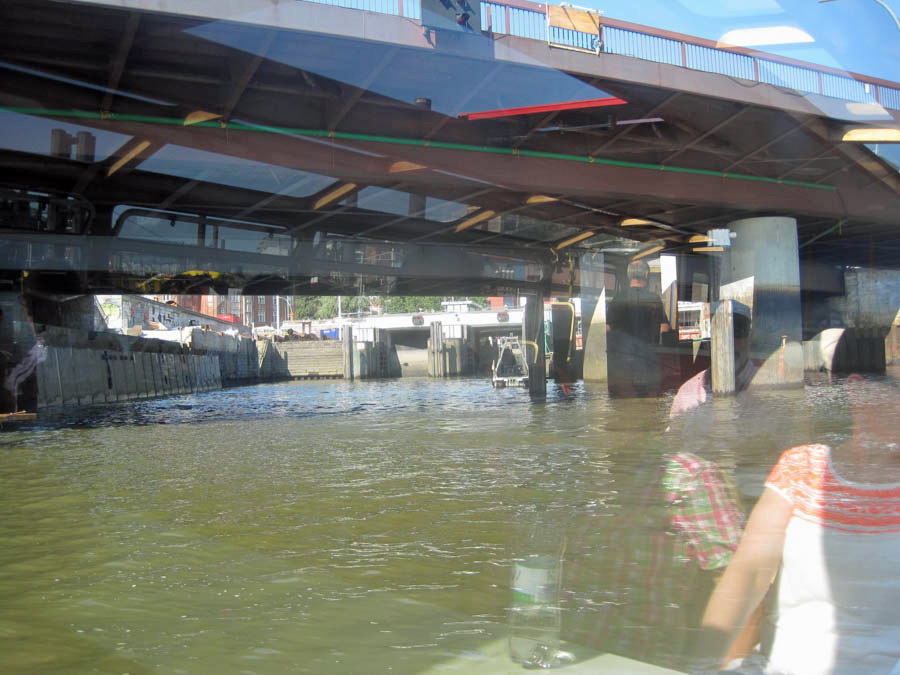
Locks on the way to the Elbe
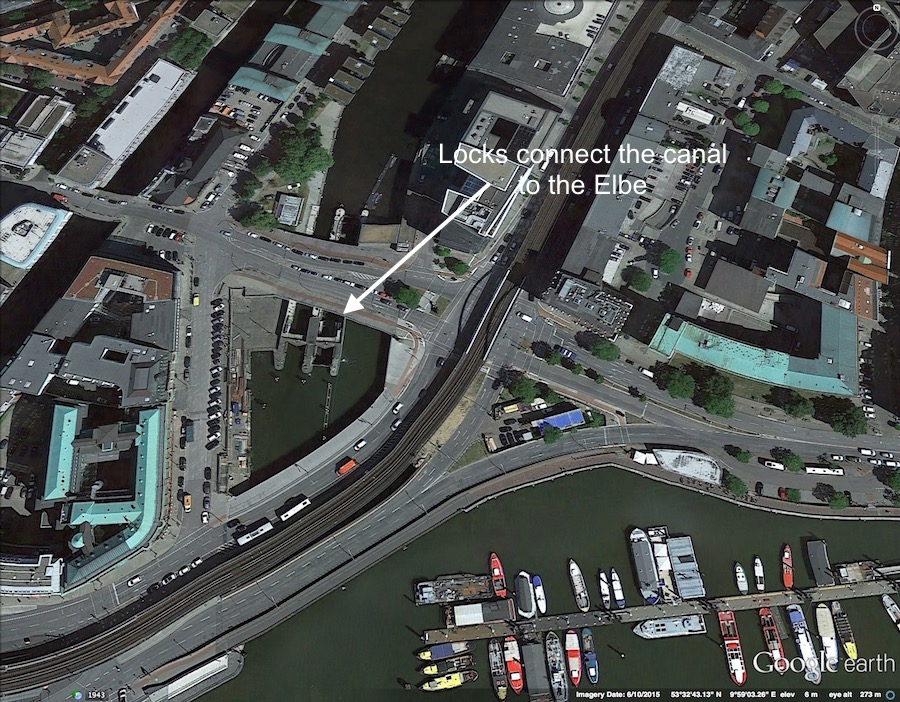
Now we are on the Elbe
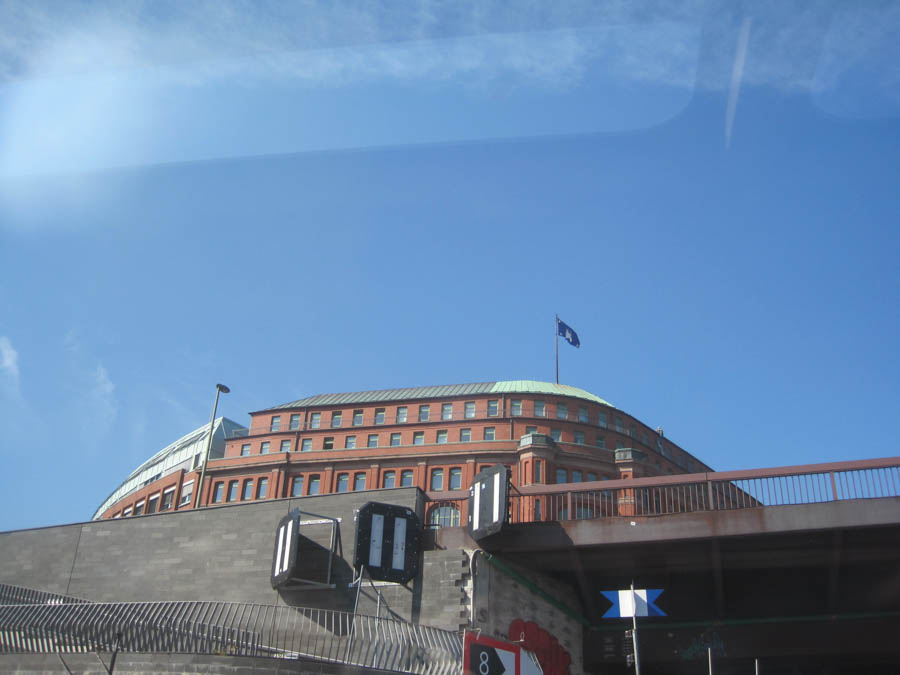
Bricks were used throughtout this area
after the great fire

Transition from Inside harbor to Elbe river
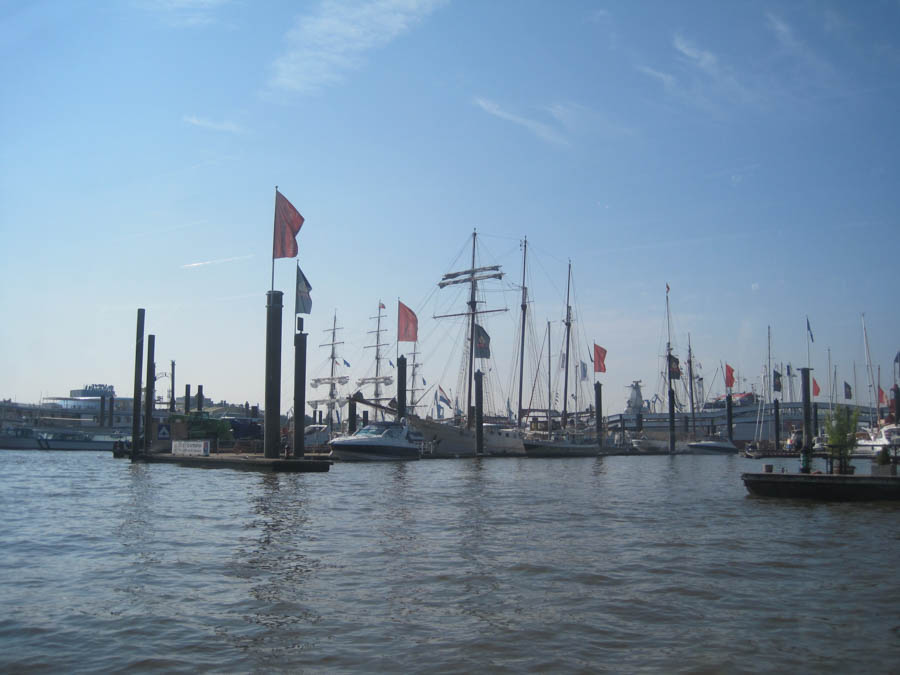
Yachts in the harbor of Hamburg

Many tall ships were in port
Did You Know? - The Speicherstadt means 'City of Warehousesin Hamburg, Germany is the largest warehouse district in the world where the buildings stand on timber-pile foundations, oak logs, in this particular case. It is located in the port of Hamburg—within the HafenCity quarter—and was built from 1883 to 1927.

An aerial view of the warehouse district
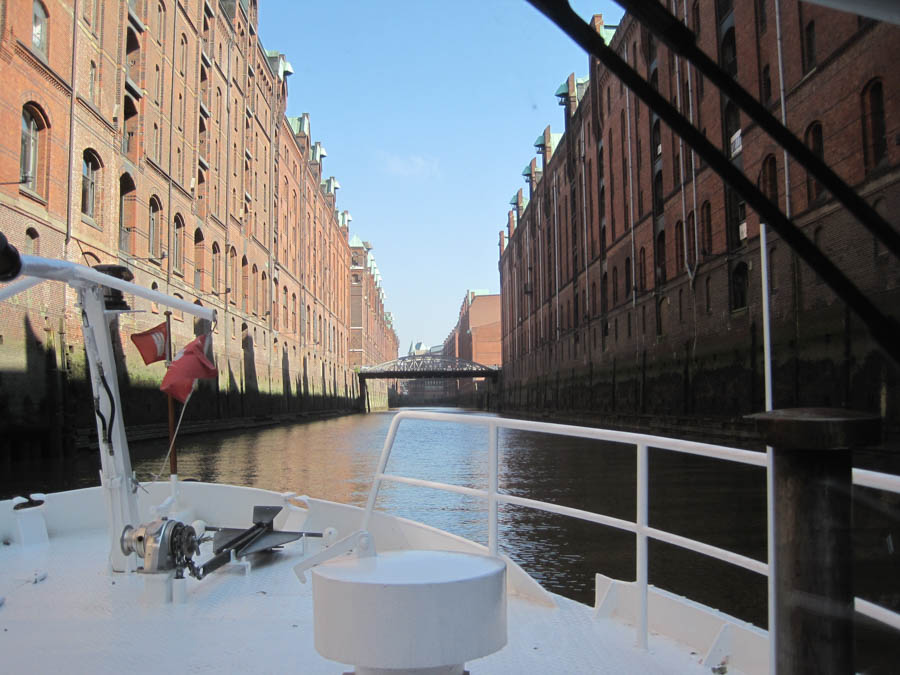
Speicherstadt
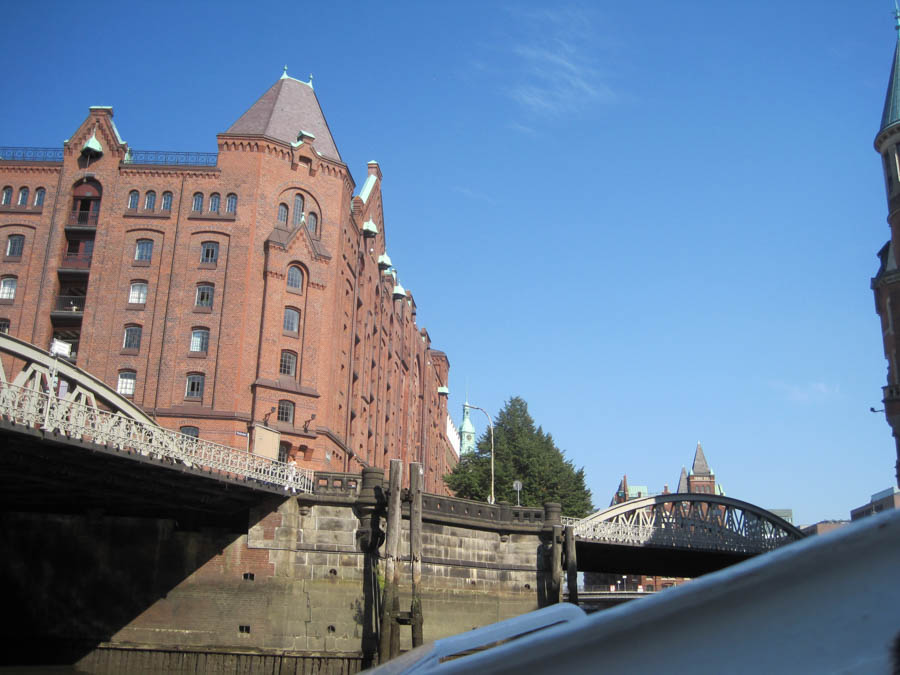
Warehouses everywhere

Waterways and bridges make movement of commerce easy

Nikolai Church
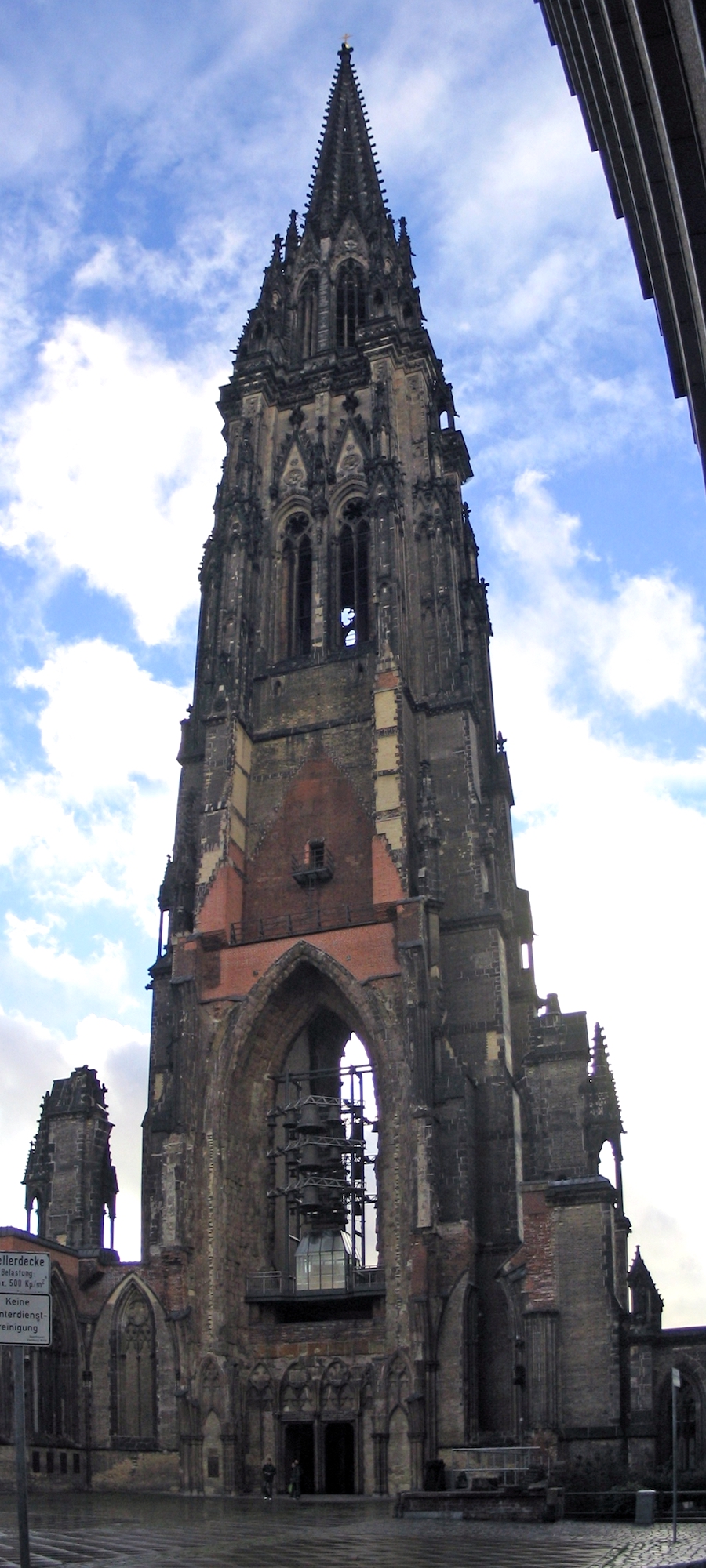
Simply amazing... This picture was post WWII
Did You Know? - The Gothic Revival Church of St. Nicholas (German: St.-Nikolai-Kirche) was formerly one of the five Lutheran Hauptkirchen (main churches) in the city of Hamburg. The church lies now in ruins, with only its tower remaining, serving as a memorial and an important architectural landmark.
When Hamburg residents mention the Nikolaikirche, it is generally to this church that they are referring, and not the new Hauptkirche dedicated to Saint Nicholas, which is located in the Harvestehude district.
The church was the tallest building in the world from 1874 to 1876 and is still the second-tallest structure in Hamburg.
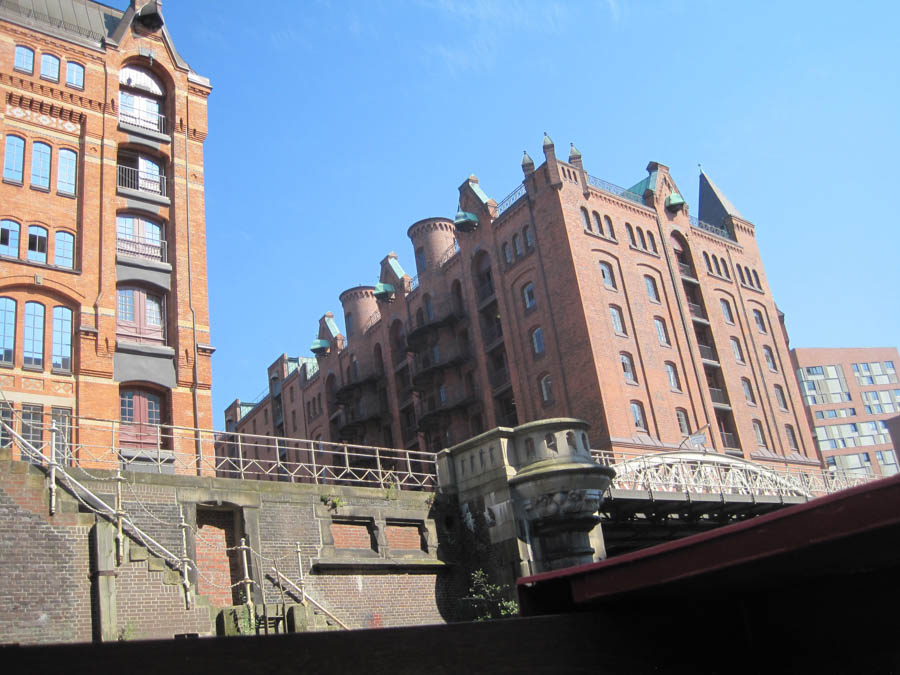
The large buildings border the canals

Moving toward te Elbe River

Old Barkassen (Barks)
line the canal
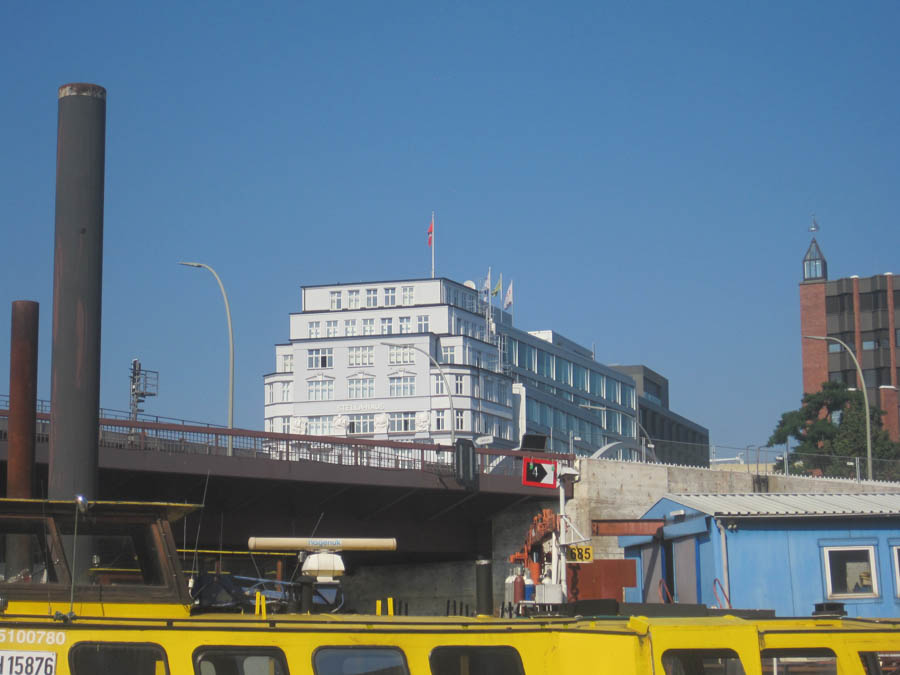
The Stella House
Did You Know? - The elegant office building was built in 1874-75 by the Hamburg architect Martin Haller Rödingsmarkt 52nd The original five bullets were increased in 1921 by the architect Lindhorst, Reith, Zauleck & Hormann further five floors. Since the old floors had not taken the additional load, the increase was given its own groundbreaking ceremony.
From the house you have a direct view of the harbor (lodges location). What makes the house Stella is the facade: She was not dressed in a dark brick, but in light plaster - now light blue.
The recesses of the added floors make the building appear graceful.
c

The Museums Harbor
Did You Know? - A trip to the popular Hanseatic city should also include a visit to the many museum ships in Hamburg. These are former passenger liners or barges that have been converted into museums. During a visit to one of these special ships, both residents and tourists can learn about the history of the city as a shipping and trading post. Each of the museum ships, which also document the development of the harbour, have had their influence on it over the years.
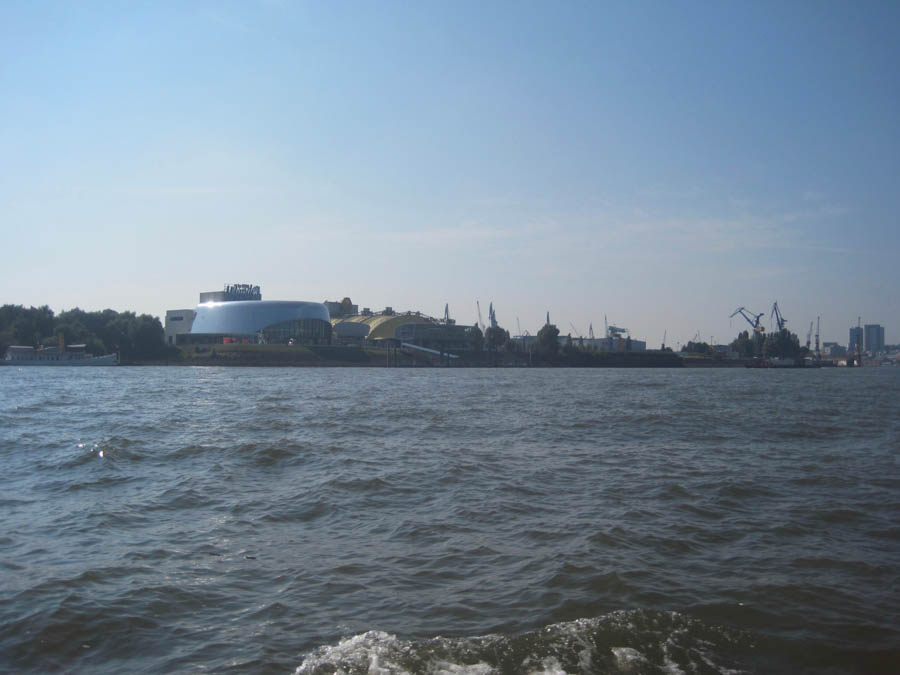
The Stage Theaters are on the water
Did You Know? - In eight months of building the theater in 1994 on the former site of Stülcken shipyard for the musical production Buddy built and named according to "Buddy Musical Theater". The cost of the building was DM 15 million. The theater had 1500 seats, including nine lodges, on an area of 5000 m².
After the takeover by Stage Entertainment (formerly Stage Holding) the theater from April to November 2001 under the architect Klaus Latuske completely rebuilt. The theater hall was redesigned and expanded to 2030 seats. The stage and the stage were changed The Lion King for the claims of the musical and expanded.
The foyer was enriched by the distinctive skyline restaurant. The 7 x 50 m glass facade of the restaurant changed the front of the theater to today's typical appearance. The stage tower was decorated with the lion's head logo of the musical. Foyer Restaurant and became an art exhibit owned by Joop van den Ende is. In the grounds of two sculptures were Niki de Saint Phalle erected. It was renamed "Theater im Hafen".
On 2 December 2001. celebrated The Lion King here its premiere in Germany and has since performed with great success.
In 2011, the theater was renamed "Stage Theater im Hafen Hamburg".

A paddle wheeler?

Elbphilharmony

See the full sized image
(View across the roofs of Altstadt, pass the tower of St. Katharinen,
the Speicherstadt, onto Elbphilharmonie and port, 2011)
Did You Know? - The Elbphilharmonie is a concert hall under construction in the HafenCity quarter of Hamburg, Germany. The new construction sits on top of an old warehouse building (Kaispeicher A) and is designed by Swiss architecture firm Herzog & de Meuron.
When completed, it will be the tallest inhabited building of Hamburg, with a final height of 110 metres (360 ft).

Michel and TV tower
Did You Know? -
Hamburg's tallest structure and modern landmark was built between 1965 and 1968 in honour of the German physicist Heinrich Rudolf Hertz. The Heinrich-Hertz-Turm, affectionately called "Telemichel" by the residents of Hamburg, has a total height of 279.8 metres and weighs 43,000 tonnes.
The restaurant and observation deck at a height of 128 metres has been closed since January 2001. Up until then, it was possible to enjoy coffee and cake, or even bungee jumping, with a view of the Hanseatic city of Hamburg from a different perspective.
Did You Know? - St. Michael's Church (German: Hauptkirche Sankt Michaelis, colloquially called Michel, is one of Hamburg's five Lutheran main churches (Hauptkirchen) and the most famous church in the city. St. Michaelis is a landmark of the city and it is considered to be one of the finest Hanseatic Protestant baroque churches.
The church was purposely built Protestant unlike many other Hamburg churches which were originally built by Roman Catholics and were converted to Protestantism during the Reformation.
It is dedicated to the Archangel Michael. A large bronze statue, standing above the portal of the church shows the archangel conquering the devil.
The 132-meter high Baroque spire totally covered with copper is a prominent feature of Hamburg's skyline and has always been a landfall mark for ships sailing up the river Elbe.

New buildings are underway all along the Elbe
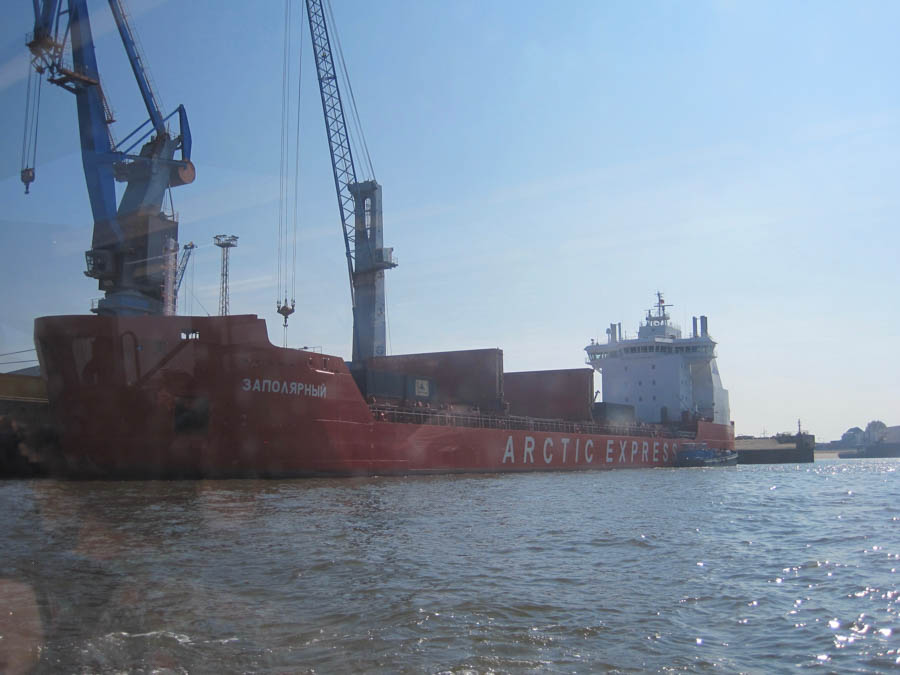
Ships get loaded and unloaded 24 hours a day!
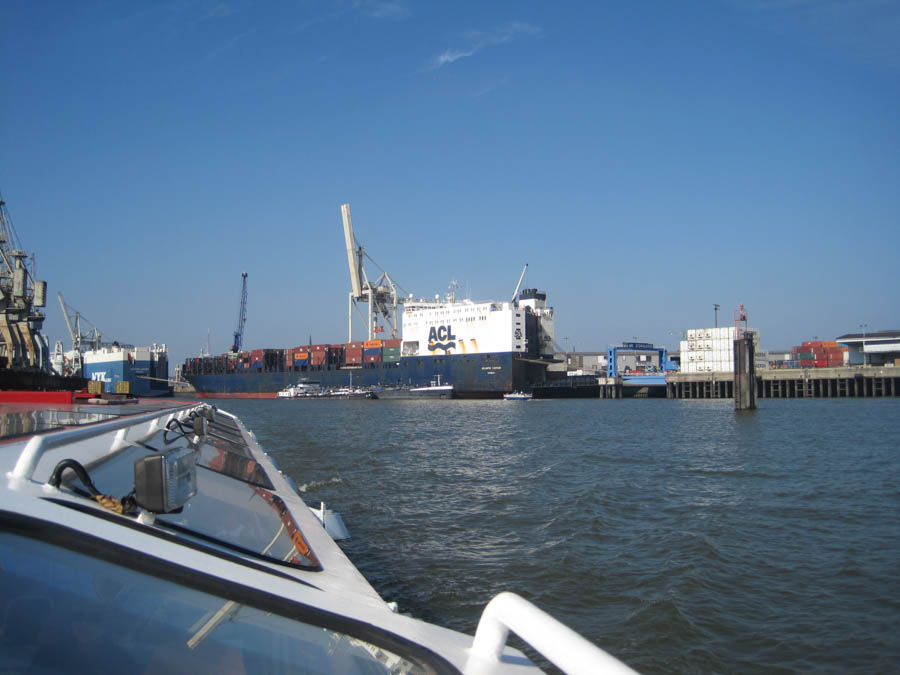
Where will it be going next??
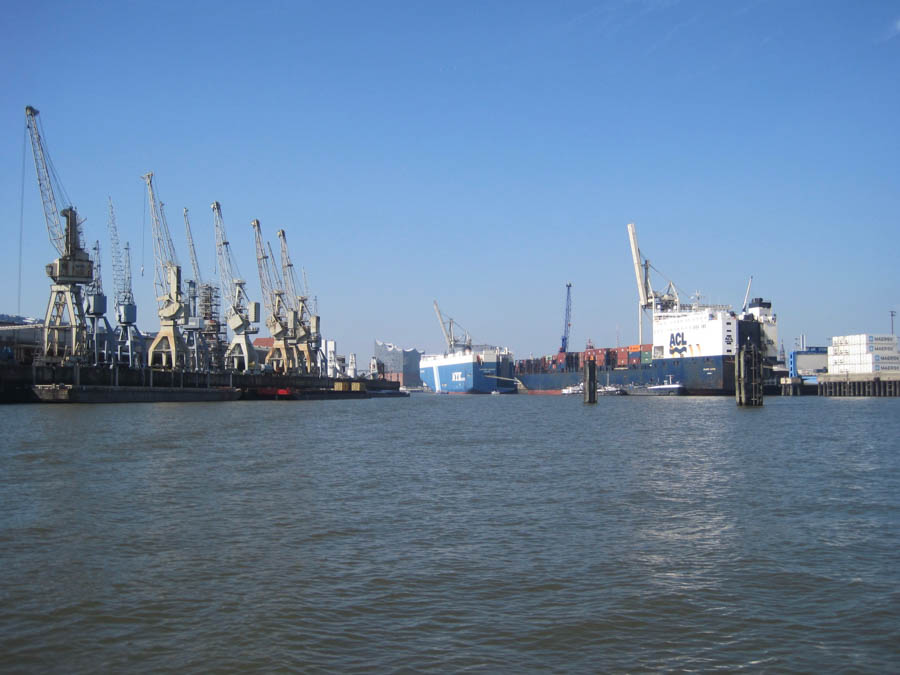
Constantly moving in and out of the harbor

Roll on--Roll off

These apartments have a great view of the river activities

A fireboat museum is getting an overhaul

Alsterflet
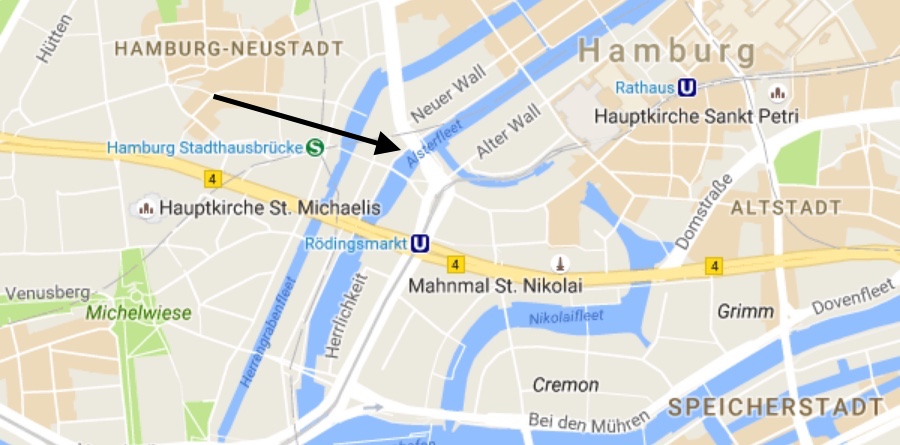
Did You Know? - The Alster's final section between Kleine Alster and its mouth at Binnenhafen, is called Alsterfleet, as part of a network of inner-city canals, including Bleichenfleet, Herrengrabenfleet, Mönkedammfleet, Neuerwallfleet and Nikolaifleet. Alsterfleet is regulated by two locks at Rathaus/Rathausmarkt and Baumwall, the latter protecting it from the Elbe tide.

Old and new side by side
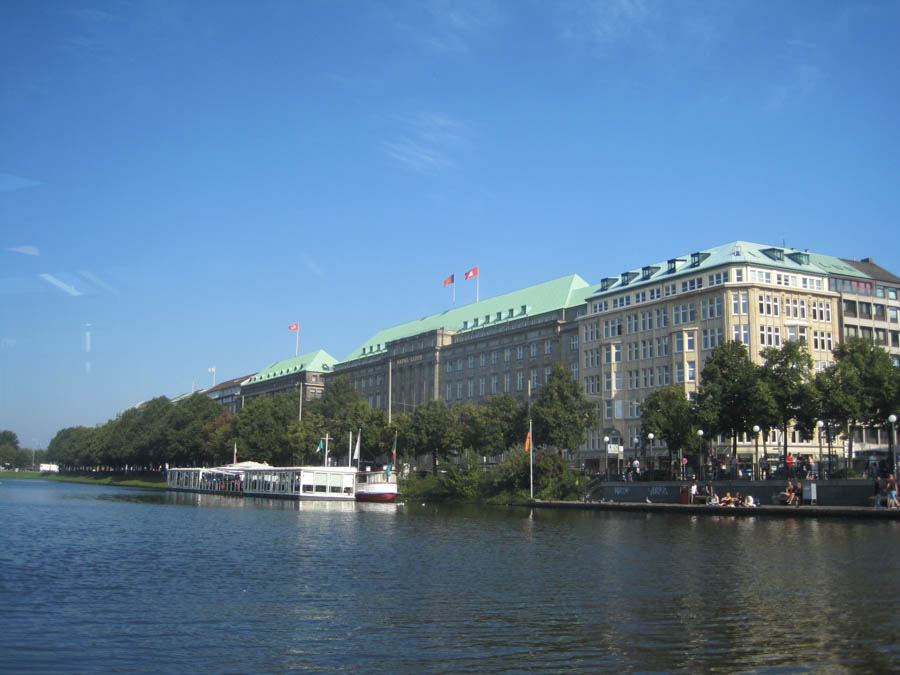
Ballindamm
Did You Know? - The Ballindamm is a street in the center of Hamburg. Located directly on the Inner Alster lake, provides the Ballindamm the link between Jungfernstieg and Glockengießerwall. It is thus in the heart of the city.
It was created after the Great Fire of 1842 as Alsterdamm.
1947 was renamed Ballindamm. It owes its name to the German shipowner Albert Ballin. The building of the Hapag-Lloyd is located on this road. Likewise, different banks - mainly private banks - based on Ballindamm.
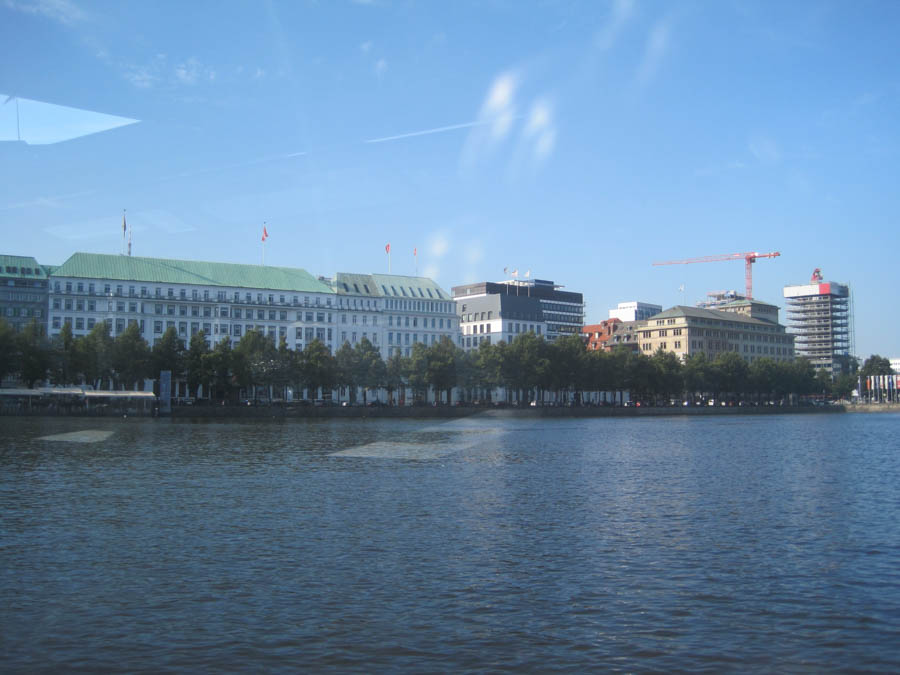
New Jungfernstieg
Did You Know? - The New Jungfernstieg in Hamburg is on the west bank of the Binnenalster

Alex Cafe
is located right on the lake

Just a few meters from our starting point!

Time for a beer... Tomorrow is a big day!
